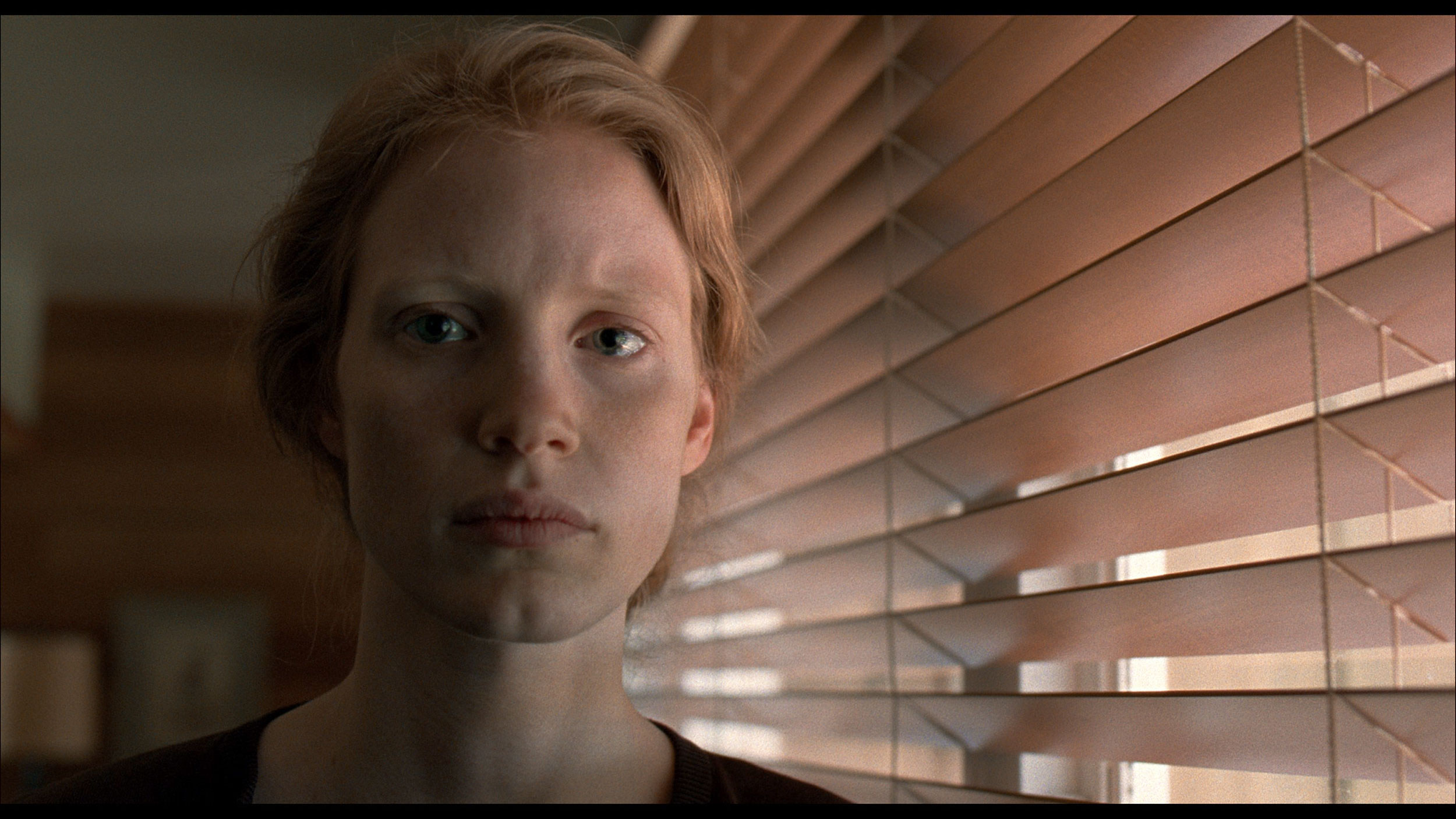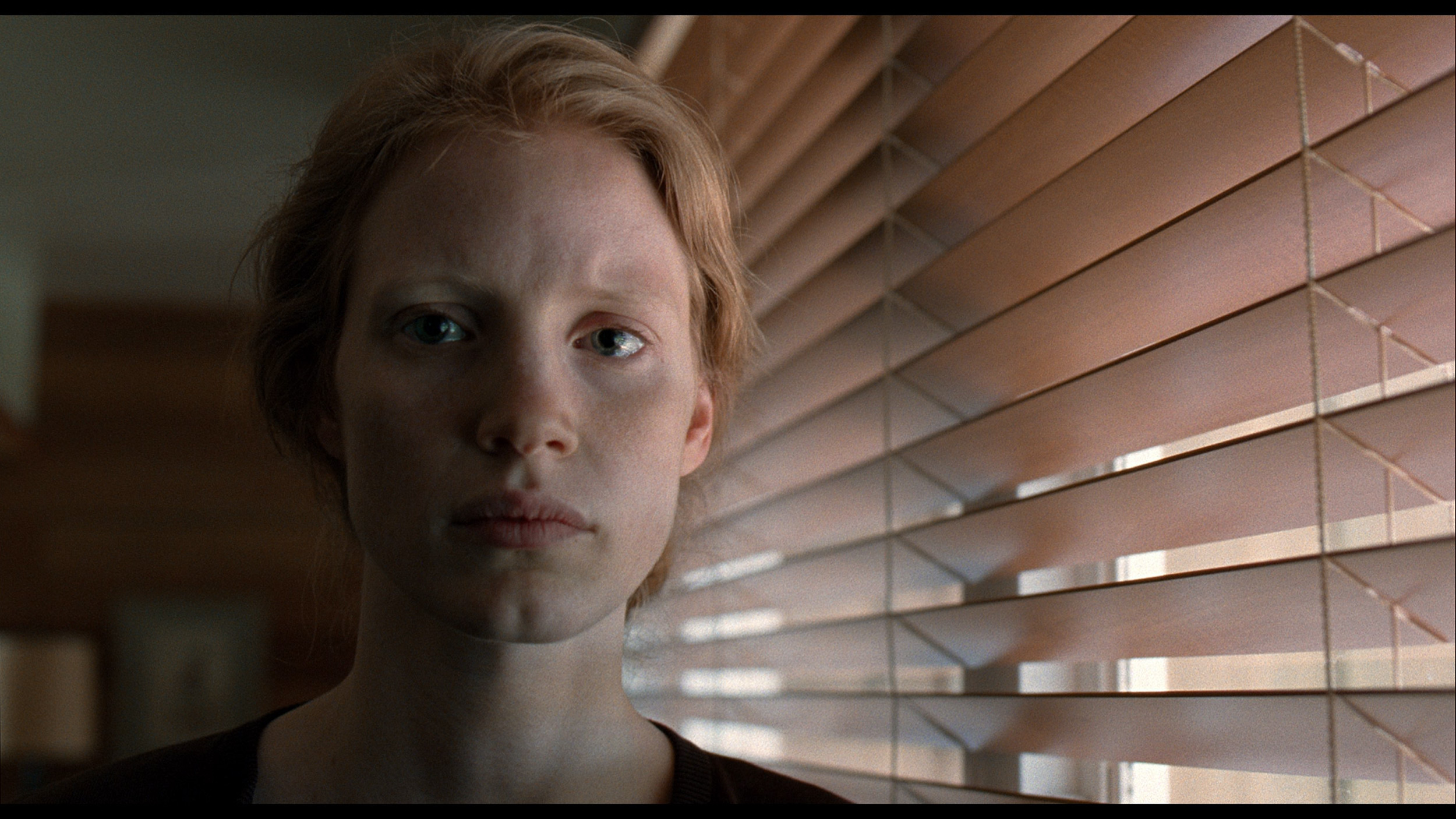- Matching (Score)
- Our verdict
- Competing TVs
- TV appearance
- Where to buy
- Contrast and black detail
- HDR effect quality
- Factory color reproduction
- Color reproduction after calibration
- Smoothness of tonal transitions
- Image scaling and smoothness of tonal transitions
- Blur and motion smoothness
- Console compatibility and gaming features
- Input lag
- Compatibility with PC
- Viewing angles
- Daytime performance
- TV features
- Apps
- Playing files from USB
- Sound
- Panel details
LG QNED93A / QNED90A Review
QNED93A / QNED90A
Available screen sizes:
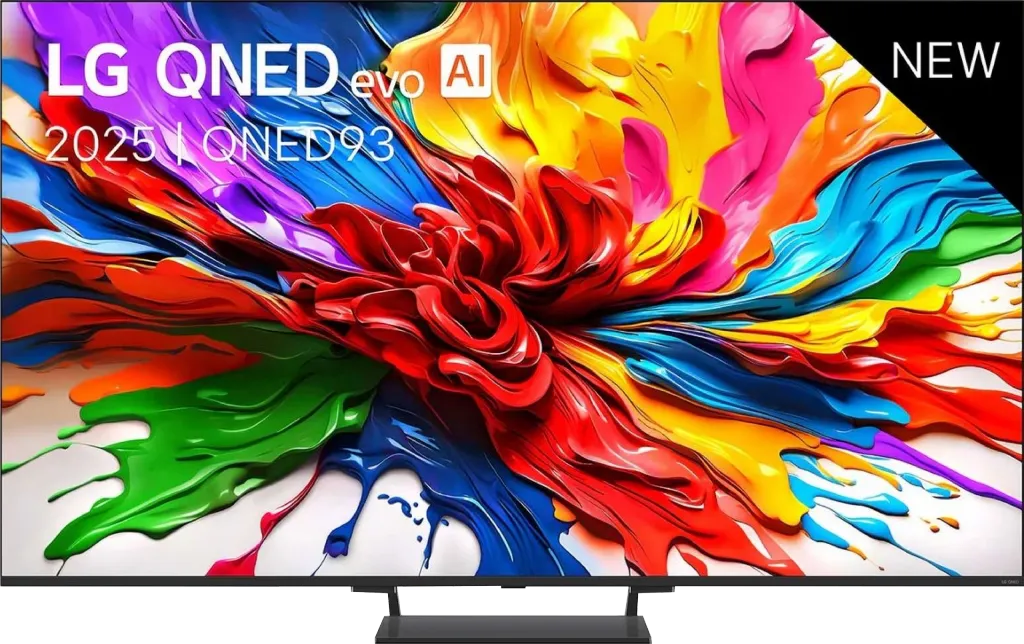
Complete the survey to find out the result
Panel type: LCD VA Refresh rate: 144Hz Brand: LG Resolution: 3840x2160 System: WebOS Model year: 2025
For years, we have primarily associated LG with OLED televisions. And it's hard to blame them – after all, the company has its own factories for organic panels, and those are its hallmark. In the LCD segment, especially in more advanced constructions with Mini-LED backlighting, LG has never played a leading role. However, the model LG QNED93A is a step away from this rule. The manufacturer is trying to prove that it can also create a solid LCD television with proper local dimming. Did this attempt succeed? We check it out in practice.
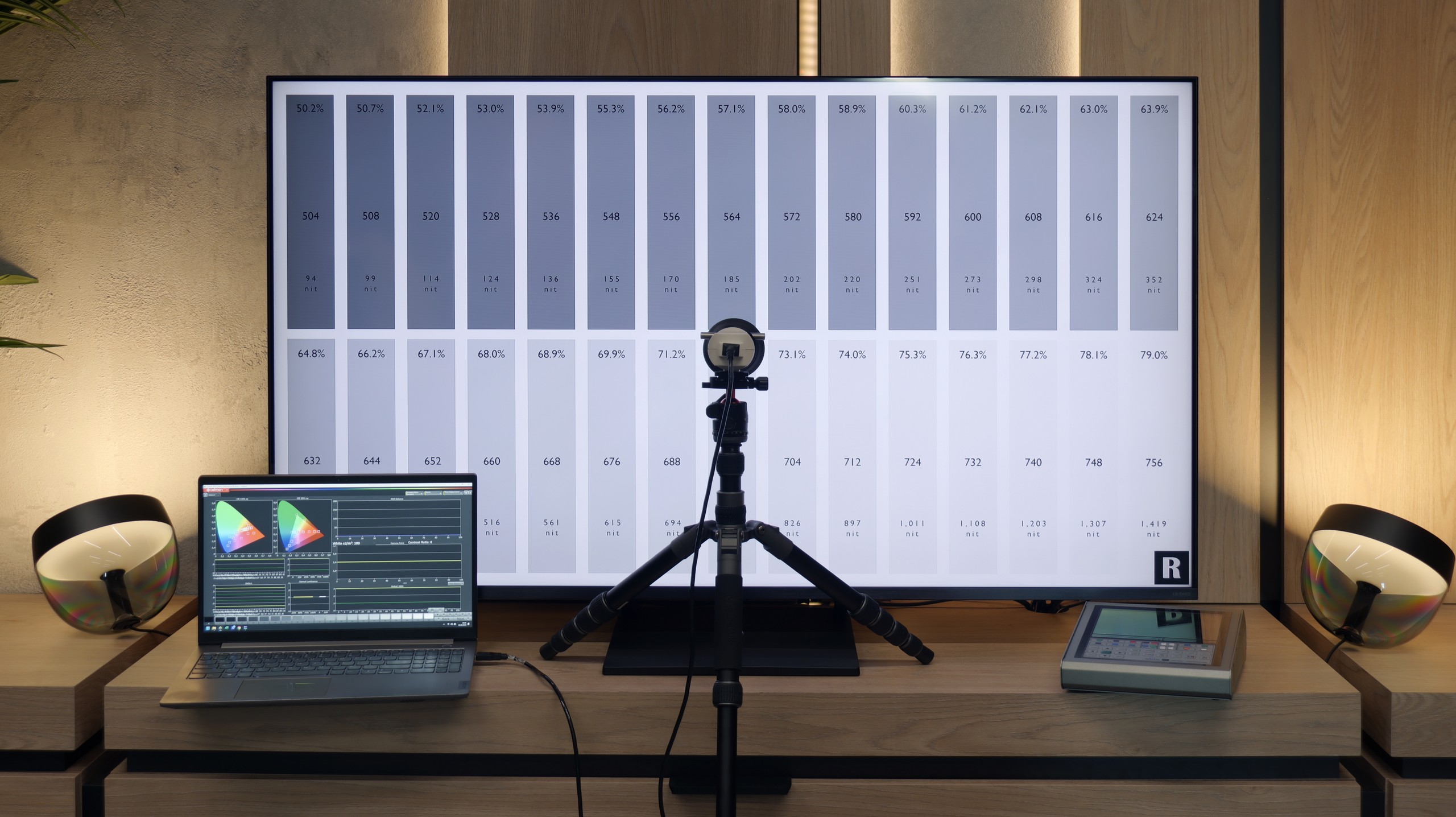
LG QNED93A - Our verdict
7.3
Overall rating
LG QNED93A is a television that, at first glance, appears to be a solid step forward compared to previous LCD models from this brand. On paper, we get a lot: a significantly larger number of dimming zones, a 144 Hz refresh rate for gamers, support for all HDR formats, including Dolby Vision, and WebOS with a new Magic remote, which still ranks among the most user-friendly operating systems. The QNED93A shines the most in gaming applications. Four fully functional HDMI 2.1 ports allow you to connect consoles and computers without any limitations, and the low input lag is maintained at both 120 and 60 Hz. For PC gamers, an additional advantage is the 144 Hz mode and full compatibility with G-Sync and FreeSync. So, it can be confidently said that in terms of gaming features, the QNED93A does not have any complexes compared to the competition. Another strong point is WebOS. LG's system has long been regarded as one of the most convenient for everyday use, and this is confirmed here. Everything is clear, and the Magic remote allows you to control the television like a mouse pointer – quickly and intuitively. Brightness can also be considered a plus. At its peak, it manages to achieve results close to 1400 nits. This is enough to ensure the picture doesn't fade in brighter rooms and that special effects in movies or games look convincing. The image processor does a good job of upscaling older content – television or films in lower resolutions appear clearer and sharper than on many competing screens.
However, it cannot be denied that the biggest problem with the QNED93A is the local dimming algorithms. In scenes full of black, the screen can darken significantly, causing many details to simply disappear. The effect is such that contrast looks better at first glance but comes at the expense of information that should be visible. An additional problem is the Dolby Vision mode, which typically enhances certain aspects of screens, but in this case, changes very little. The differences between dynamic and static metadata must literally be searched for with a magnifying glass. This is simply disappointing because the hardware, with its number of dimming zones and stronger backlighting, has the foundation for a better effect. So who is the LG QNED93A for? It is a television that works brilliantly as a home entertainment center, especially if you're thinking about gaming on a console or PC. In everyday television viewing and movie watching in well-lit conditions, it also provides a lot of satisfaction thanks to its high brightness and solid image processor. However, one must accept that in scenes with a lot of black and when fully utilizing HDR, this model does not match its competitors. LG has shown that it can create a very solid LCD screen, but it is also evident that not everything has been polished as it has in their OLED televisions.
Advantages
Quite good contrast
High number of dimming zones
Good HDR brightness (about 1400 nits)
Wide color gamut coverage (about 96% DCI-P3)
144 Hz mode and a full set of gaming features (HDMI 2.1, VRR, ALLM, G-Sync, FreeSync, HGiG, Game Bar)
Low input lag (7 ms at 120 Hz)
Good compatibility with PC, including 144 Hz and readable fonts
WebOS with a rich selection of apps and voice control
Magic Remote
Quite effective upscaling and image processing tools - great for older content like antenna TV or YouTube
Disadvantages
Local dimming algorithms need refinement
Very average viewing angles
Dolby Vision does not bring a noticeable improvement over HDR10
Movies and series in UHD quality
6.8
Classic TV, YouTube
6.9
Sports broadcasts (TV and apps)
6.8
Gaming on console
8.5
TV as a computer monitor
8.6
Watching in bright light
6.2
Utility functions
8.2
Apps
9.1
Sound quality
6.9
Complete the survey to find out what fits your preferences
LG QNED93A - Competing TVs in this price range
LG QNED93A - TV appearance
HDMI inputs: 0 x HDMI 2.0, 4 x HDMI 2.1 (48Gbps) Outputs: Toslink (Optical audio), eARC (HDMI), ARC (HDMI) Network Interfaces: Wi-Fi 2.4GHz, Wi-Fi 5GHz, Ethernet (LAN) 100Mbps
Build quality: Good
Stand type: Central
Bezel color: Graphite
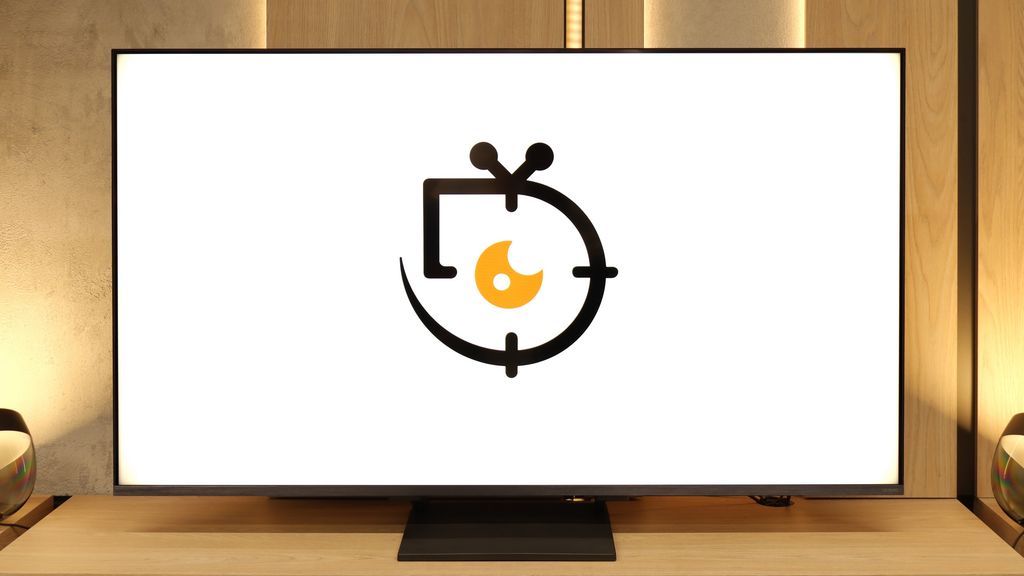
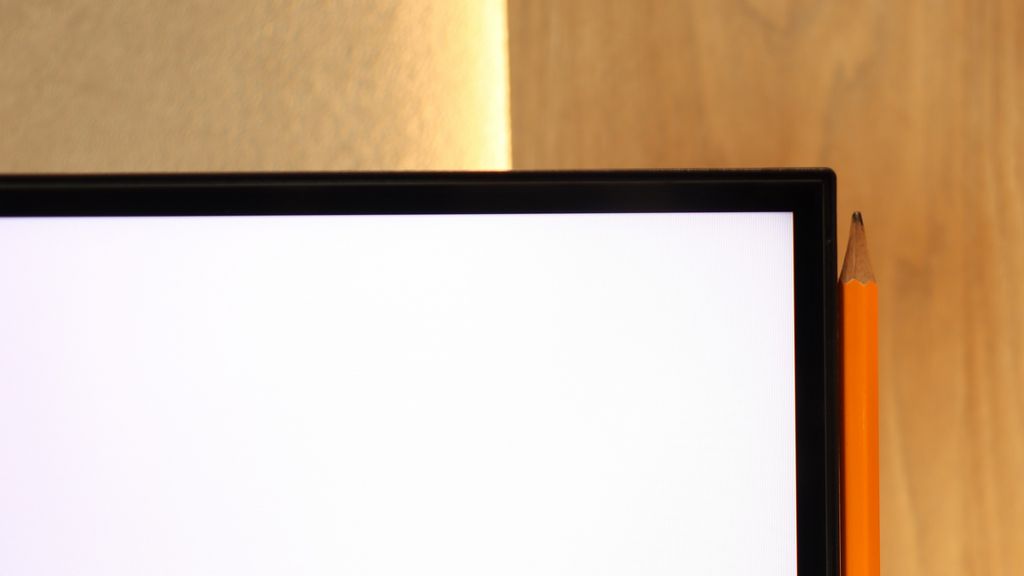
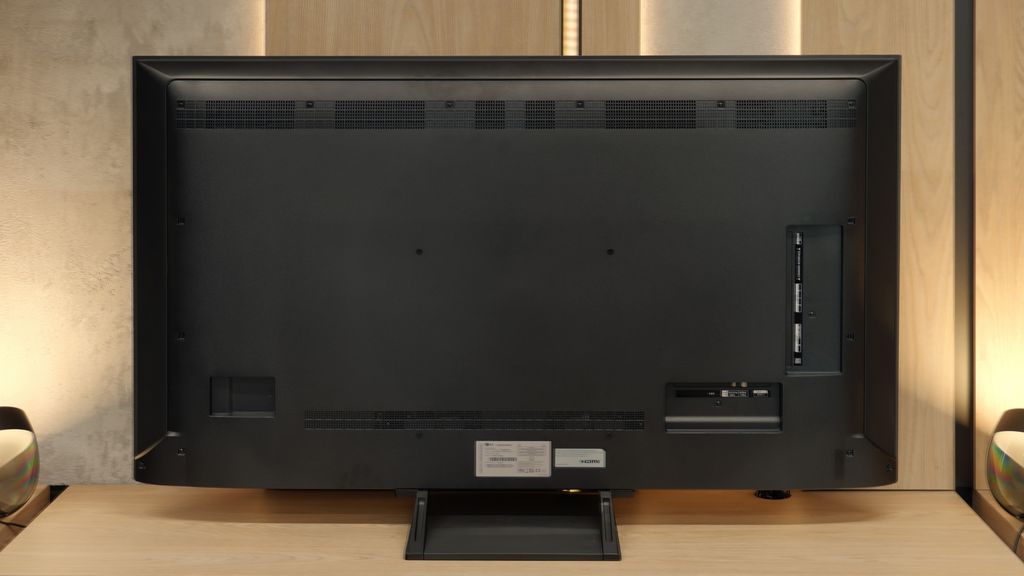
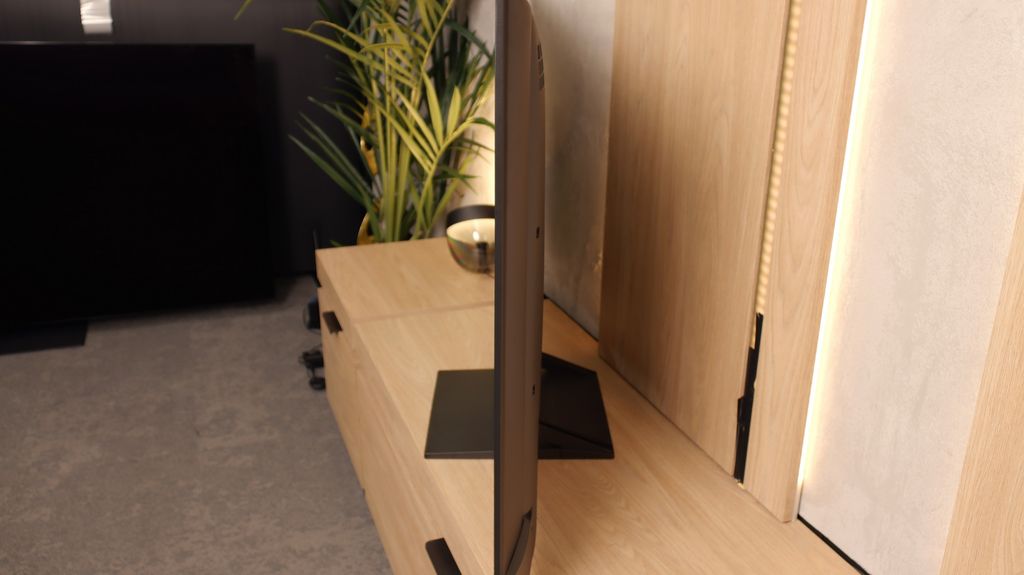
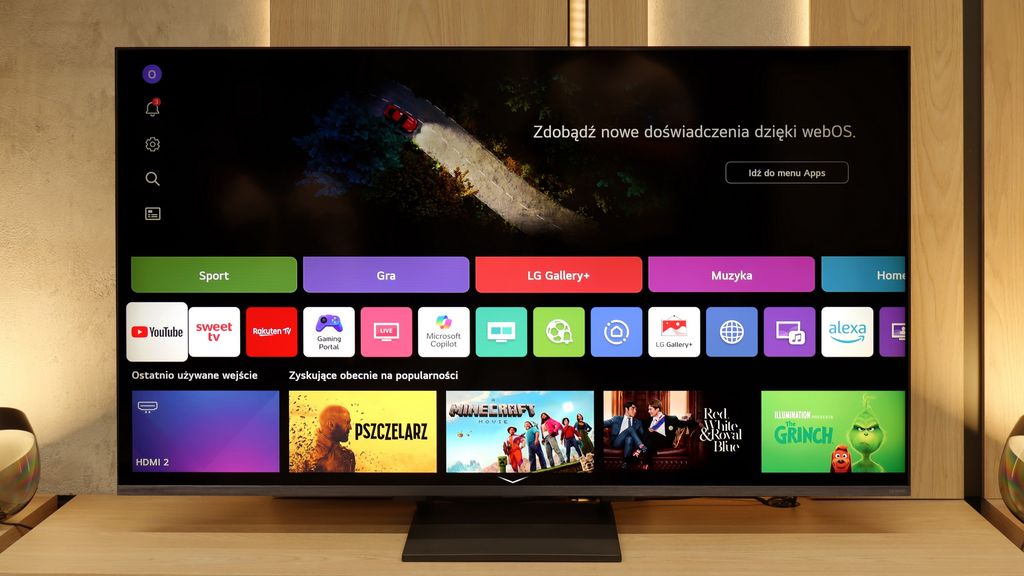
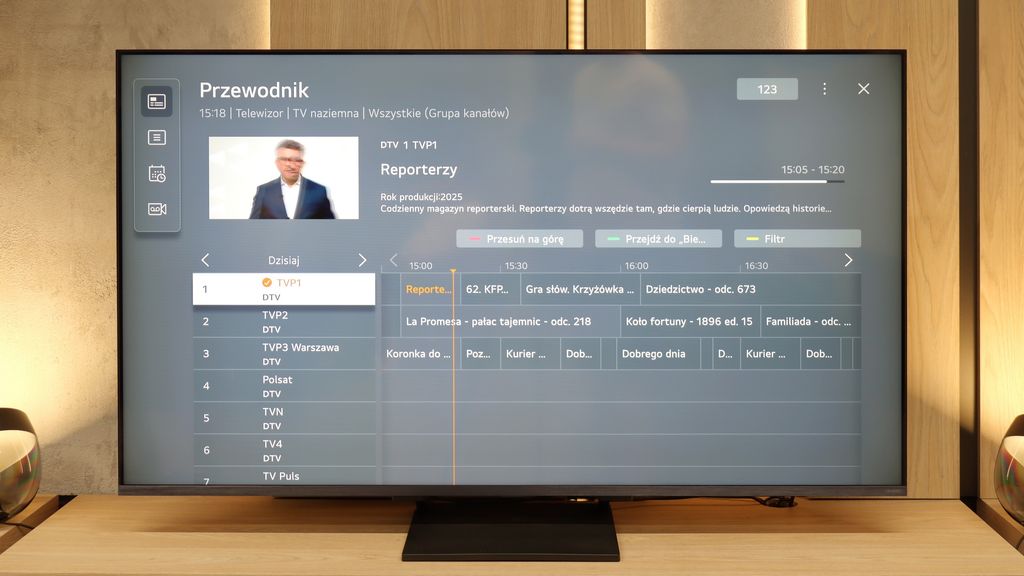
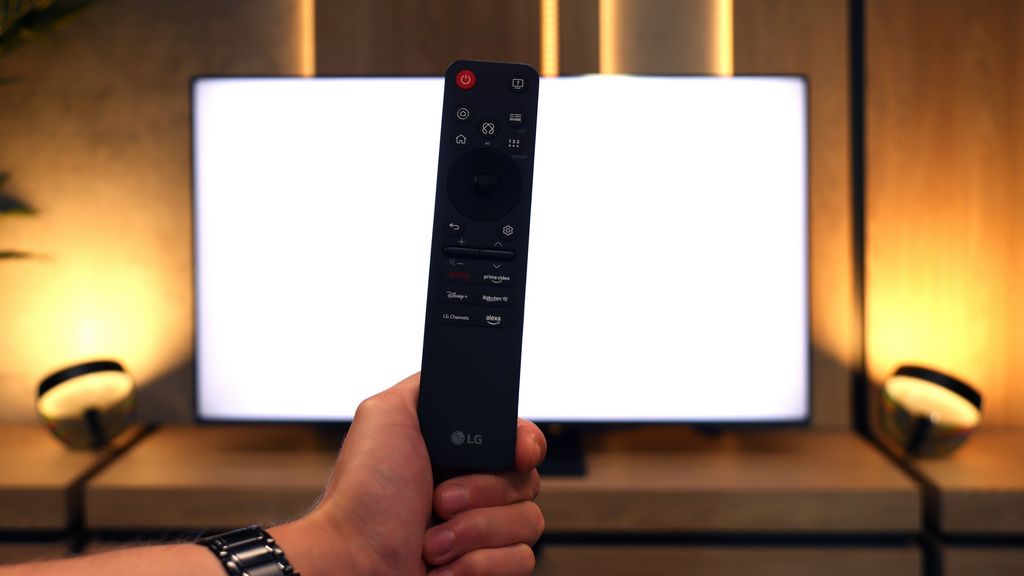
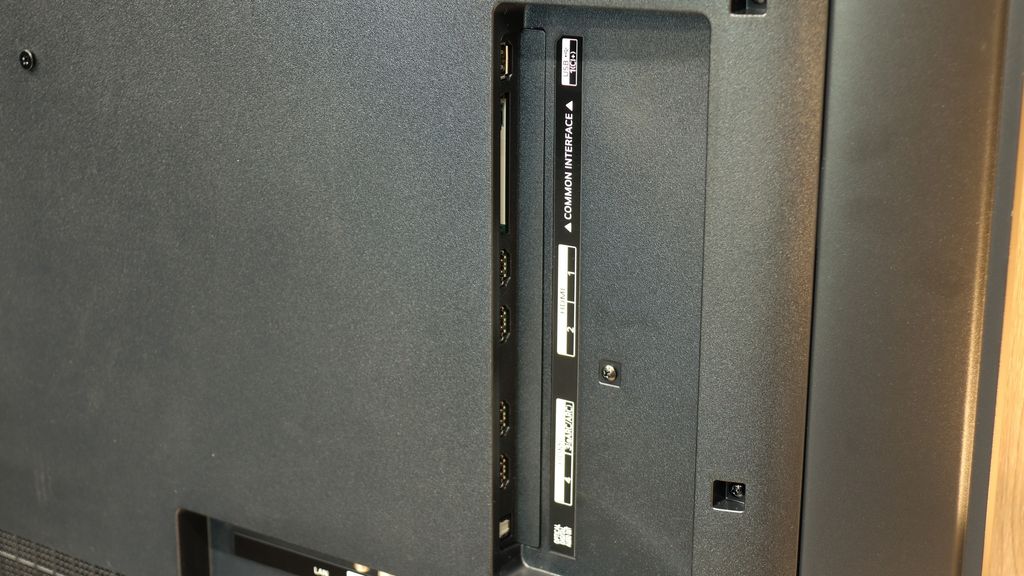
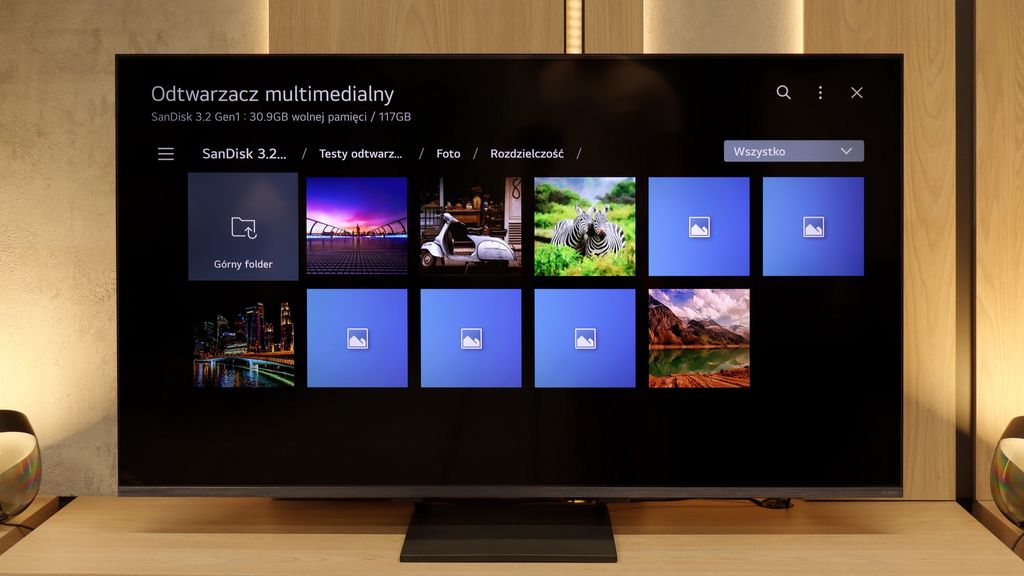
Stand: Fixed
Flat design: No
Accessories: Stand
The LG QNED93A is a television that clearly shows the manufacturer has put effort into the quality of its construction. The bezels are slim, especially at the top, where the screen looks really elegant and modern. It’s a bit different at the bottom – there LG opted for a wide aluminum-graphite strip, which distinctly contrasts with the rest and gives the device character. In the package, you'll find a central base, simple and sturdy, but without any adjustment options. We won't be able to rotate the screen or change its height, so one must accept how it was designed. From the front, the QNED93A looks very tidy, but when we look at the back, the magic fades a bit. The housing is noticeably thicker than in slimmer constructions, so there's no way to flush-mount the television against the wall. However, this does not change the fact that the overall appearance is solid and absolutely does not give the impression of a cheap construction.
Buy at the best price
Select size:
LG QNED93A - Contrast and black detail
7.3/10
Local dimming function: Yes, number of zones: 308 (14 x 22)

Result
130,500:1

Result
30,950:1

Result
15,250:1

Result
6,750:1

Result
4,600:1
Visibility of details in the lights:
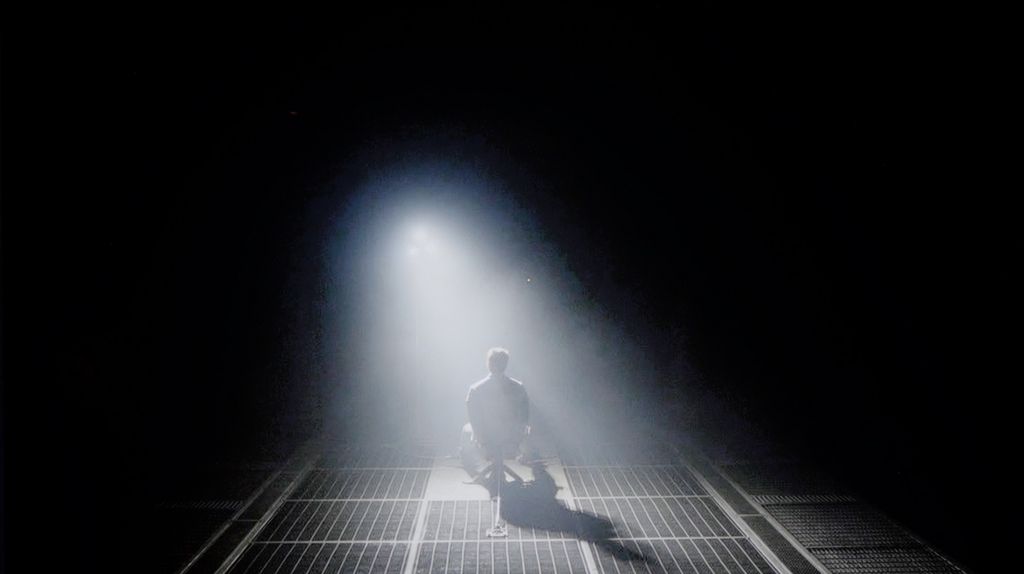
We took a close look at the 55-inch version of the LG QNED93A, equipped with a high-contrast VA panel. However, in the case of Mini-LED TVs, it's not just the panel itself, but primarily the number and operation of local dimming zones that determine the final effect. In this model, we counted as many as 308 zones, which already looks impressive from the start. For comparison – last year's QNED91T in the 65-inch variant had only around 160. The difference is enormous and shows that LG has made a significant step forward in this technology. On paper, it looks great, but practice quickly dampens the enthusiasm. The contrast in the QNED93A can indeed impress – bright elements are clearly separated from black, and in many scenes, the depth effect truly pleases the eye. The problem is that despite such a significant improvement in backlight construction, the results are not much better than in last year's model. The algorithms controlling dimming can be too aggressive. This is especially noticeable in darker sequences, where the screen dims to such an extent that subtle details disappear from view. Many viewers will appreciate the stronger black, but it is hard to ignore that this comes at the expense of the director's intentions. The most problematic are scenes with many small, bright elements. It is during these moments that typical halo effects, or glowing outlines, associated with LCDs featuring local dimming zones appear around them. This phenomenon does not completely ruin the experience, but it serves as a reminder that even with an increased number of zones, local dimming still has its limitations. Ultimately, the contrast in the QNED93A can be considered good, but we have the impression that the manufacturer did not pay enough attention to optimizing the new model when it comes to black and contrast.
LG QNED93A - HDR effect quality
5.8/10
Supported formats: HDR10, Dolby Vision, HLG Color gamut coverage: DCI P3: 95.1%, Bt.2020: 77.1%
Luminance measurements in HDR:

Result
1330 nit

Result
219 nit

Result
678 nit

Result
160 nit

Result
1016 nit
Although the number of local dimming zones in the LG QNED93A did not directly translate to a noticeably better contrast, one cannot deny that this model is brighter than its predecessor. In synthetic tests, we recorded values around 1400-1500 nits, and more importantly, these results are reflected in real movie scenes. In full-screen sequences flooded with white or bright lights, the screen was able to maintain high luminance, which produced a truly decent incredible HDR effect. Unfortunately, where the television could show its true class, namely in scenes that require precision, all the magic evaporates. The dimming algorithms we mentioned earlier are aggressive enough that small bright objects—such as distant lights, stars, or the moon—can almost completely disappear. Just look at the test scenes from the movie Pan or Sicario 2 (screens 2 and 4) to see how subtle details are dimmed to the brink of visibility. It's a shame, because a greater number of zones could theoretically lead to significantly better results. Fortunately, there are also stronger points. The QNED93A performs well in terms of color gamut coverage, achieving around 96% of the DCI-P3 standard. As a result, colors in movies look vivid and full, and the picture does not lose intensity even in more demanding scenes. So it can be said that the HDR in this model is solid, although the unfinished local dimming algorithms hinder its full potential.
Scene from the movie “Pan” (about 2800 nits)
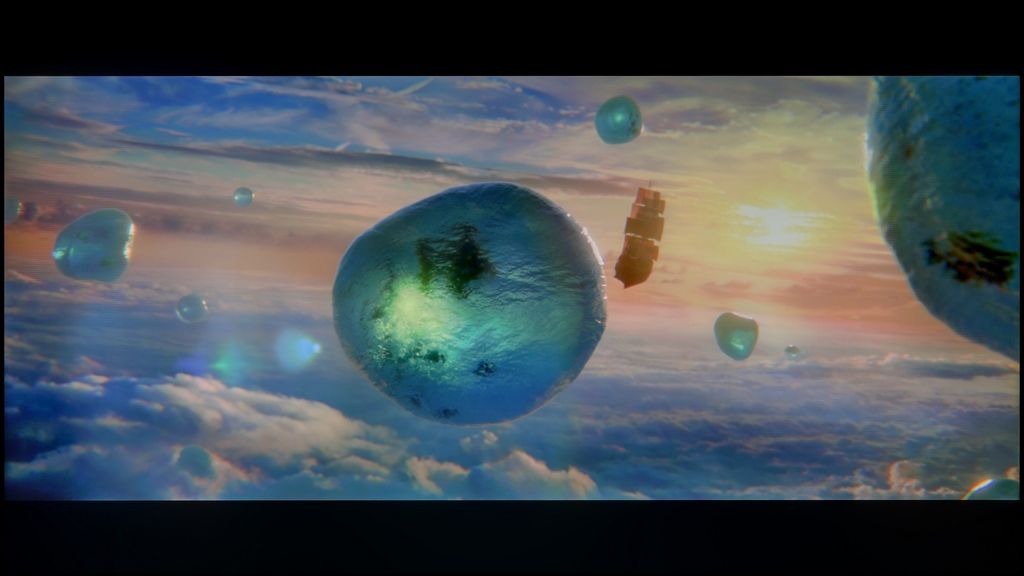
Scene from the movie “Billy Lynn” (about 1100 nits)
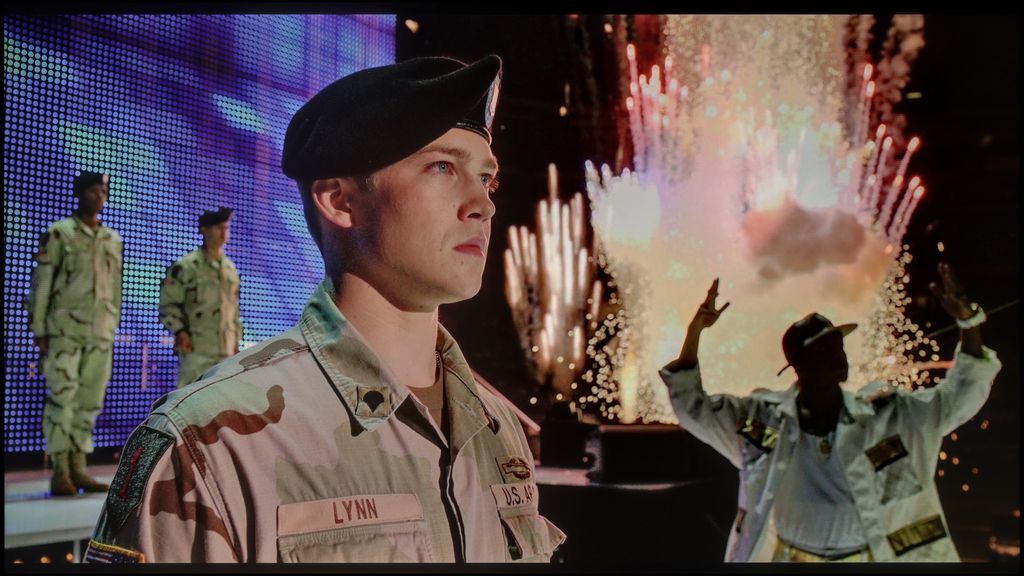
When it comes to the experience of watching movies, the QNED93A is unlikely to impress in scenes that are heavily set in darkness. However, when we turn to productions full of special effects, the screen can truly surprise in a positive way – regardless of whether we are talking about the most demanding films mastered for studio monitors or everyday series and cinematic hits available on streaming platforms. The scene from the film Pan, as you can see, has been reproduced very well – the brightest point in the form of a sunrise did not spill over into a uniform, overexposed blotch. The fireworks in Billy Lynn’s Long Halftime Walk also performed well, although here we can already see some flattening of colors and the risk that the smallest details may disappear in the darker parts of the image. However, this does not change the fact that in everyday viewing, the QNED93A should satisfy you, and the overall reception of content will be more than satisfactory.
HDR luminance chart:
HDR luminance
QNED93A supports a wide range of HDR formats, but in practice, the most important ones are two: static HDR10 and dynamic Dolby Vision. And here comes the surprise. Usually in TVs that have issues with detail in whites, Dolby Vision acts as a lifeline – pulling the image out of distress and showing what HDR10 cannot. However, in the case of QNED93A, the differences between the two standards are so subtle that you would almost need a magnifying glass to notice them. Indeed, sometimes in Dolby Vision you can see a bit more detail, but this effect is so marginal that one could get the impression that something clearly did not work as it should.
Static HDR10

Dynamic: Dolby Vision

Factory color reproduction
6/10
In movie mode (specifically Filmmaker), color reproduction on the QNED93A was relatively accurate, although it wasn't without critiques. In SDR content, white balance leaned towards warmer tones, resulting in a slight yellowing across the entire screen. Gamma, on the other hand, led to a slight brightening of the image, making it look a bit less natural, especially in scenes requiring precise shading (this is evident in the comparison picture). This isn't a problem that immediately stands out to every viewer, but more discerning individuals may feel that the picture deviates from the aesthetic intended by the filmmakers. In HDR materials, the situation looked somewhat different. The white balance presented itself quite well here, ensuring that whites didn't lean towards pink or unwanted shades of green. However, brightness management proved to be an issue. Analysis of the EOTF curve revealed that at certain moments the television can be noticeably too dark where it shouldn't be, losing some detail and reducing the realism of scenes. This detracted from the experience of HDR effects, which were theoretically supposed to be the most impressive. For this reason, we decided to carry out calibration.
Color reproduction after calibration
7.8/10
After professional calibration, the Filmmaker mode on the QNED93A gained the most where it matters most in everyday use. It was possible to adjust the white balance and eliminate the yellowish tint in SDR content, which we watch most often – television, streaming services, or standard quality films. This makes colors look natural and pleasant, and the overall experience is much more comfortable. In HDR mode, we also made adjustments, but the biggest problem here turned out to be the EOTF curve. Although LG provides some leeway in the settings, the television still manages brightness on its own terms. It is evident that the local dimming algorithms are not entirely refined and can spoil the viewing experience by dimming parts of the image at inappropriate moments. Nonetheless, it is worth opting for calibration of this model, especially the mode intended for daily viewing.
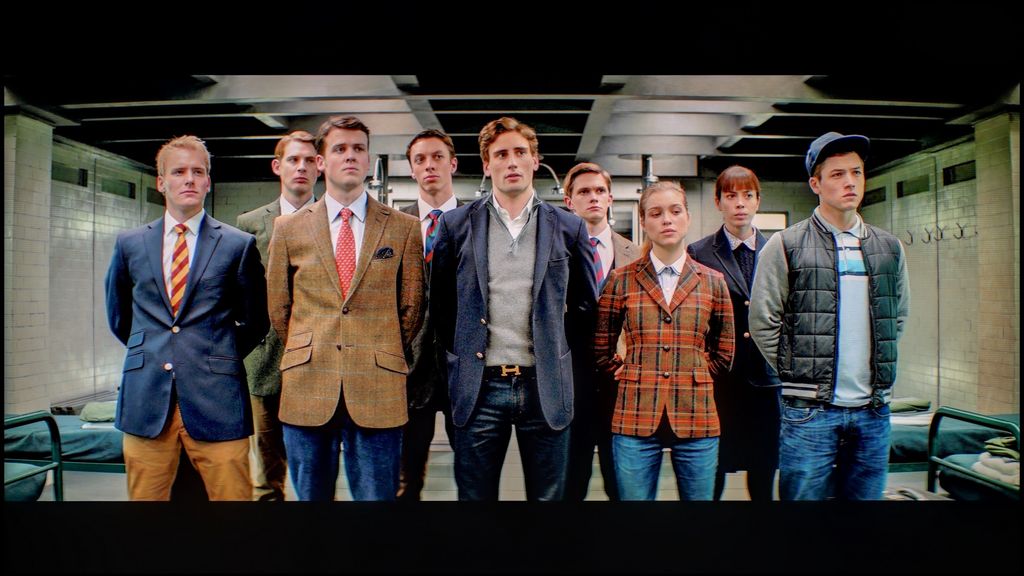
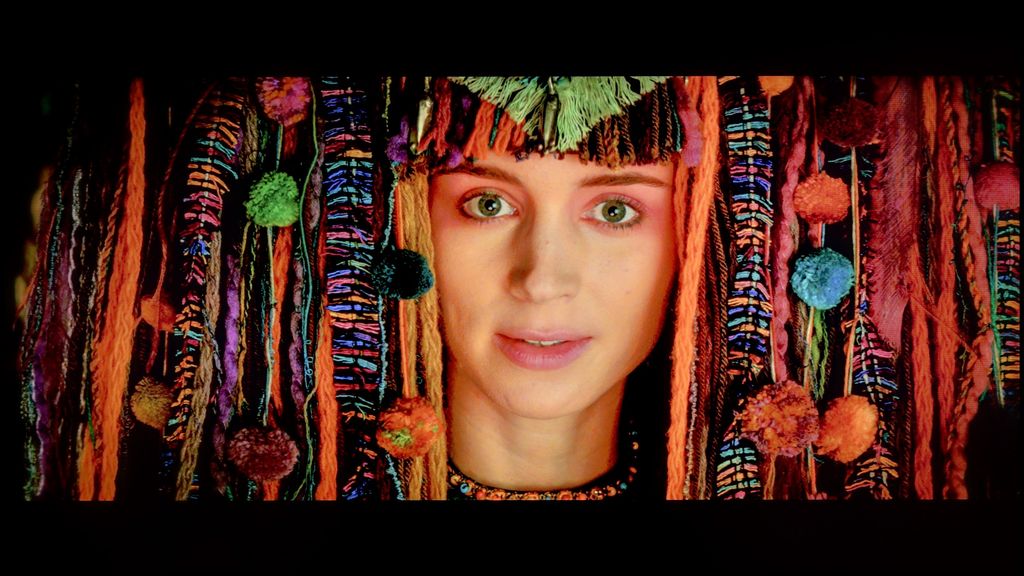
LG QNED93A - Smoothness of tonal transitions
8/10
The fluidity of tonal transitions in the LG QNED93A is really good. In most scenes, there are no artificial color divisions or banding effects. Dark shots are particularly surprising – this is where many TVs struggle, but here the image remains smooth and cohesive. In brighter sections, subtle color transitions can be observed, but they are not pronounced enough to draw significant attention. During testing, we encountered a clear issue with the DSE effect, also known as the "dirty screen" effect. On our unit, the phenomenon was strong enough that in bright scenes, the corners noticeably darkened, giving the image a vignetted appearance. This could be a flaw of the test unit, but during intense viewing, it was hard to ignore.
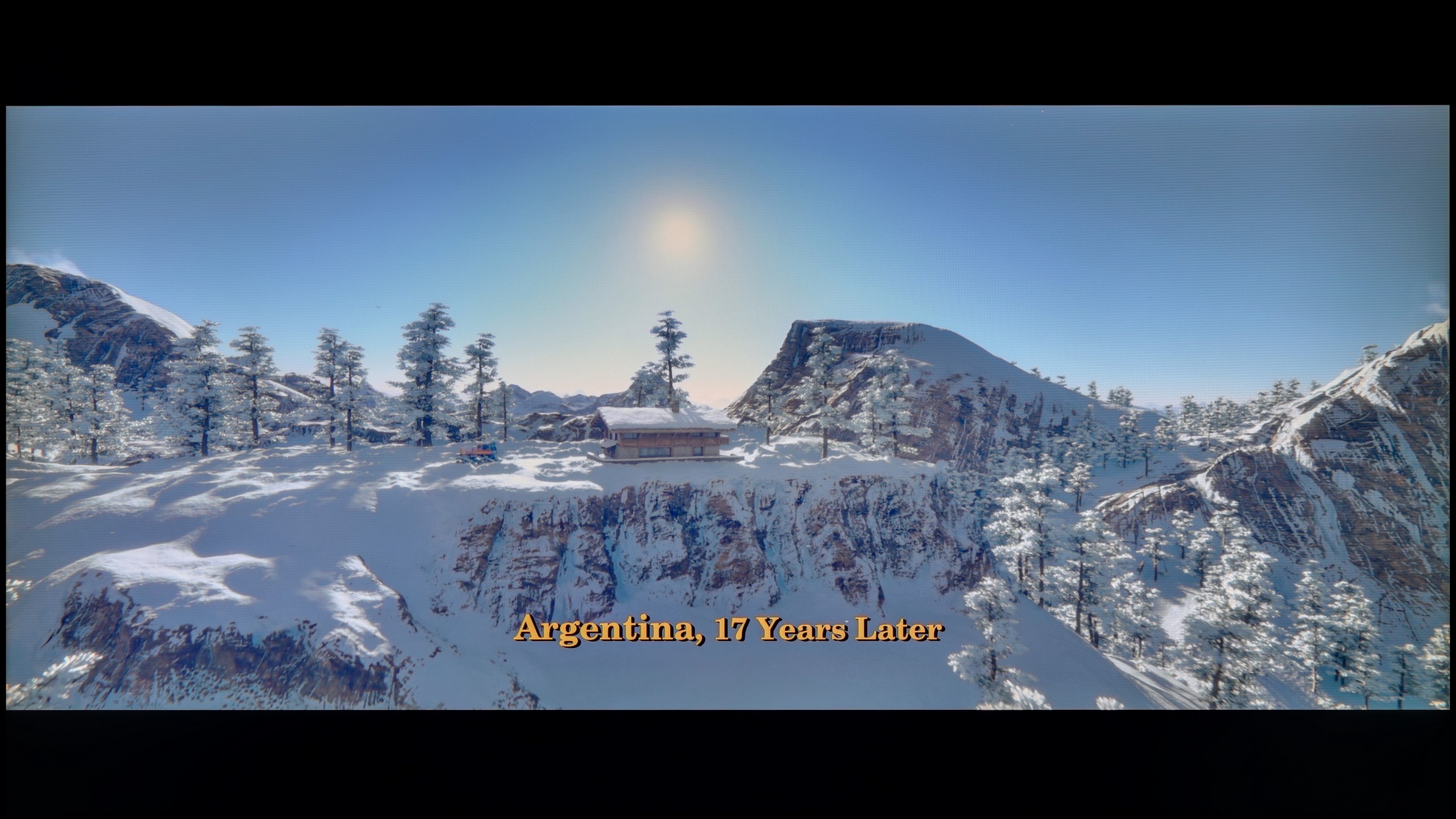
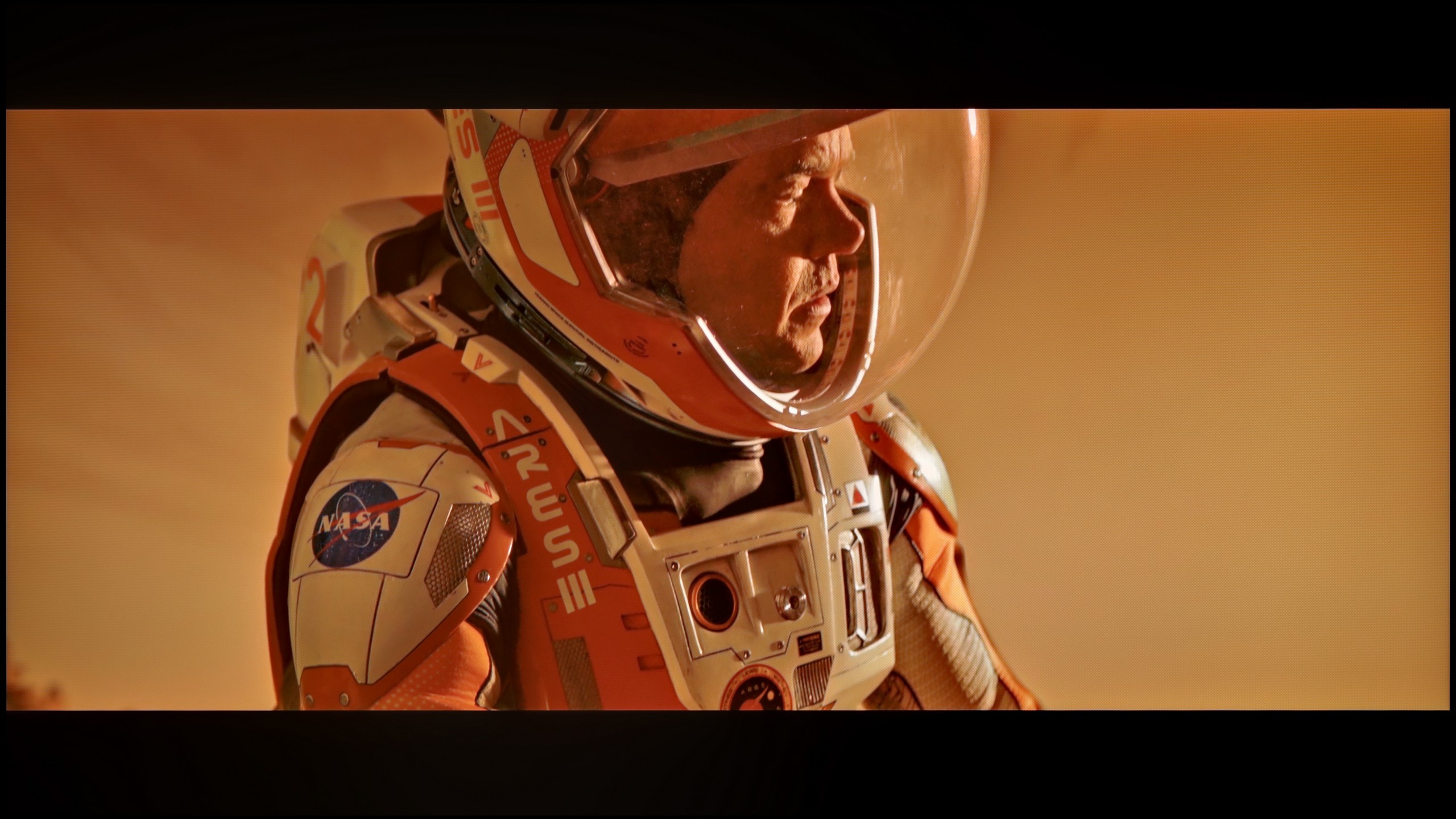
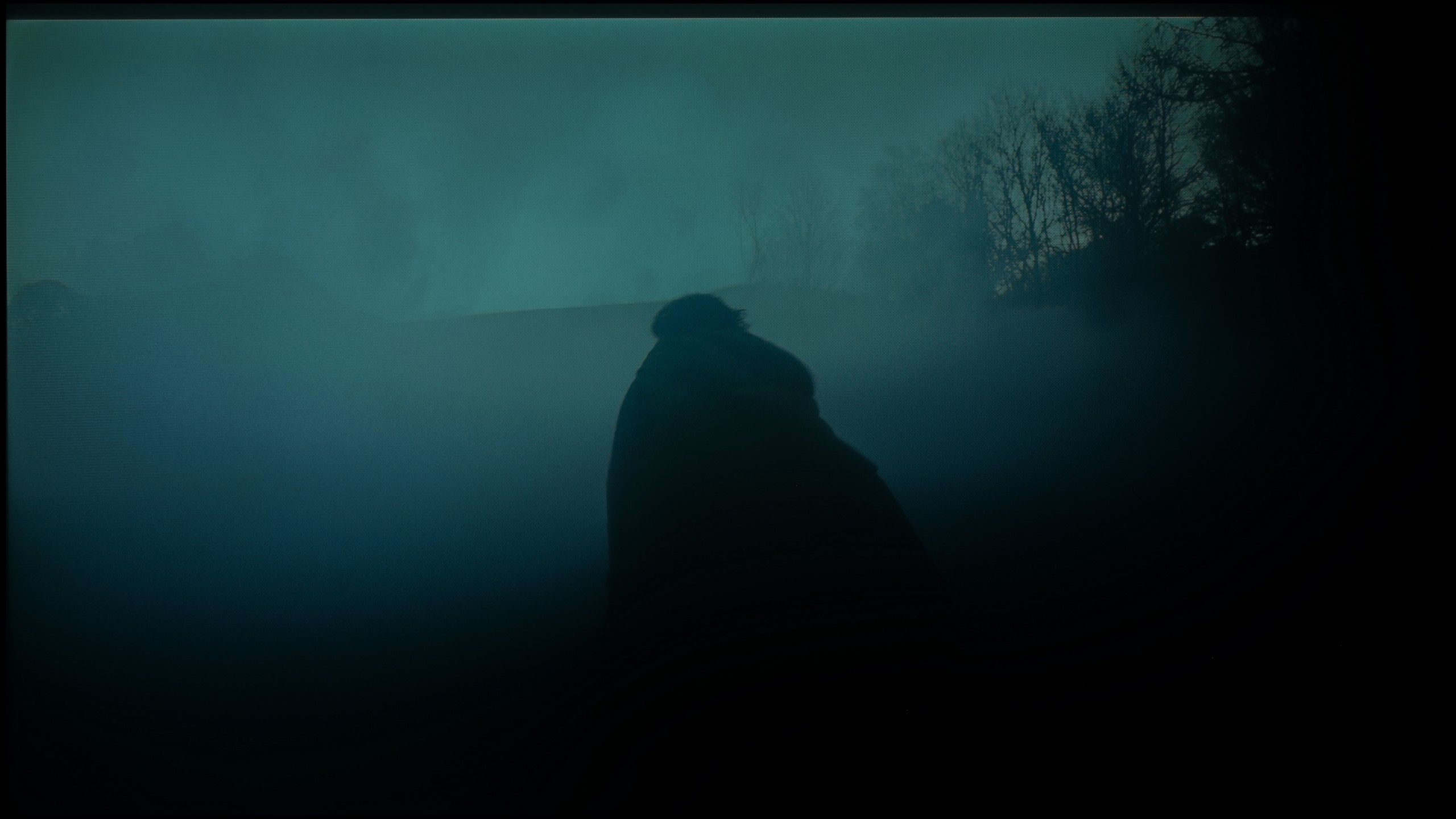
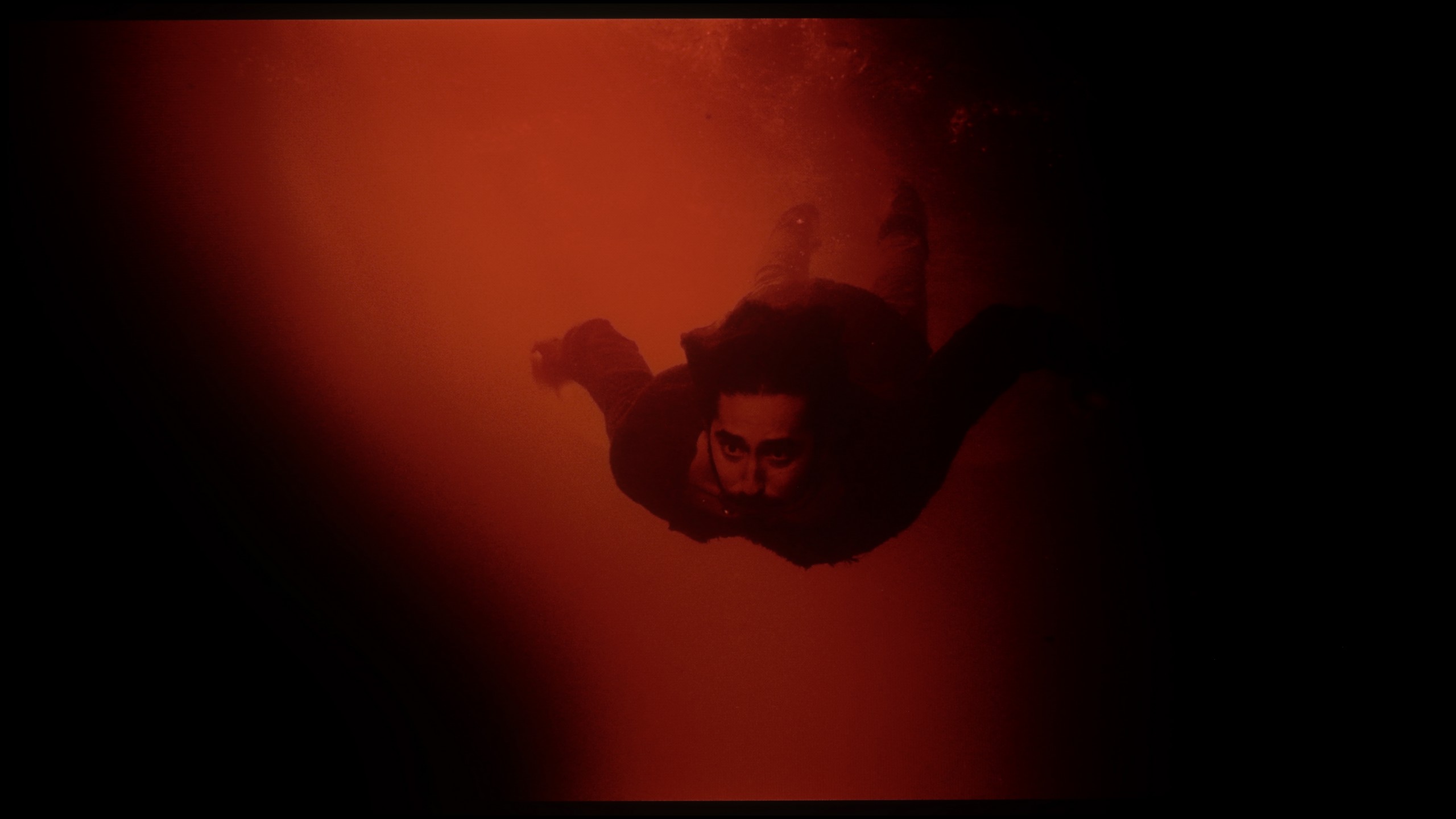




Image scaling and smoothness of tonal transitions
7.8/10
Smooth transition function
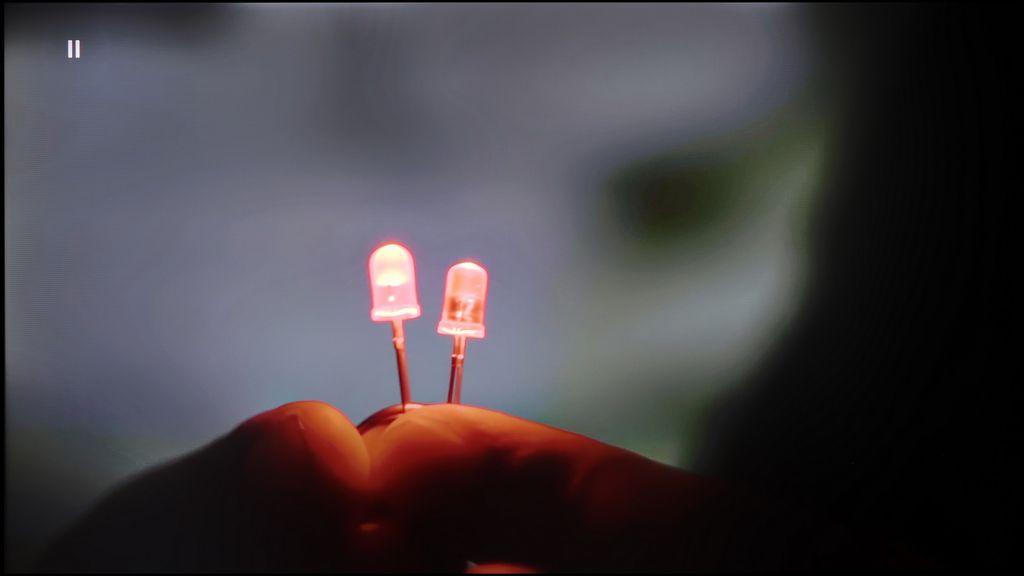
Image without overscan on the SD signal

LG QNED93A proves to be a very solid television for everyday use. Its image processor handles scaling excellently, ensuring that even older movies or terrestrial television gain sharpness and detail. During the screening of "The Godfather," it's clearly visible how upscaling pulls extra details from the image – the characters' faces and the texture of the clothing appear much clearer than in the original material.
The digital image processing also deserves praise. The television is equipped with a function for reducing unwanted color banding and screen irregularities. It works best in the "Medium" setting – subtly smoothing tonal transitions without over-interfering with the image. This way, the natural film grain is preserved, and the screen doesn't appear unnaturally smoothed. Perhaps in some scenes, you can still notice slight color banding, but in practice, the effect is more favorable than with a stronger intervention from the algorithm.
LG QNED93A - Blur and motion smoothness
7.6/10
Maximum refresh rate of the panel: 144Hz
Film motion smoothing option: Yes
Blur reduction option: Yes
BFI function 60Hz: Yes, 60Hz (image flickers)
Brightness drop with BFI: 56%
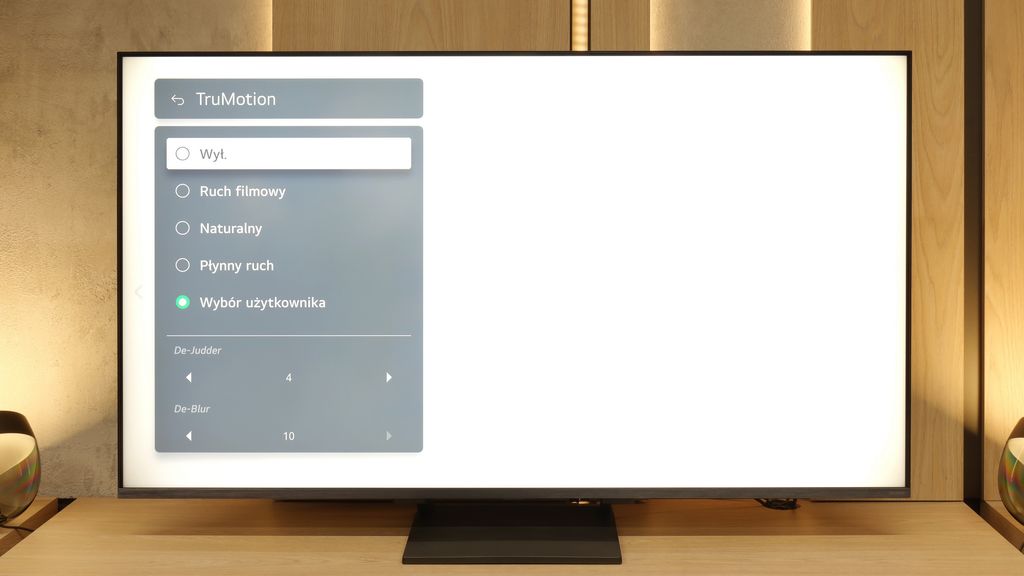
LG QNED93A is equipped with a 144 Hz panel. This is primarily a nod to gamers, but the fact that higher refresh rates are increasingly making their way into televisions can be seen as a positive development. In everyday viewing, 120 Hz remains key, and in this regard, the QNED93A performs well. The manufacturer also provides the option to adjust the image through the TruMotion system – the De-Judder and De-Blur sliders allow you to choose between a cinematic motion character with visible frames and a fully smoothed theatrical motion.
Blur (native resolution, maximum refresh rate):
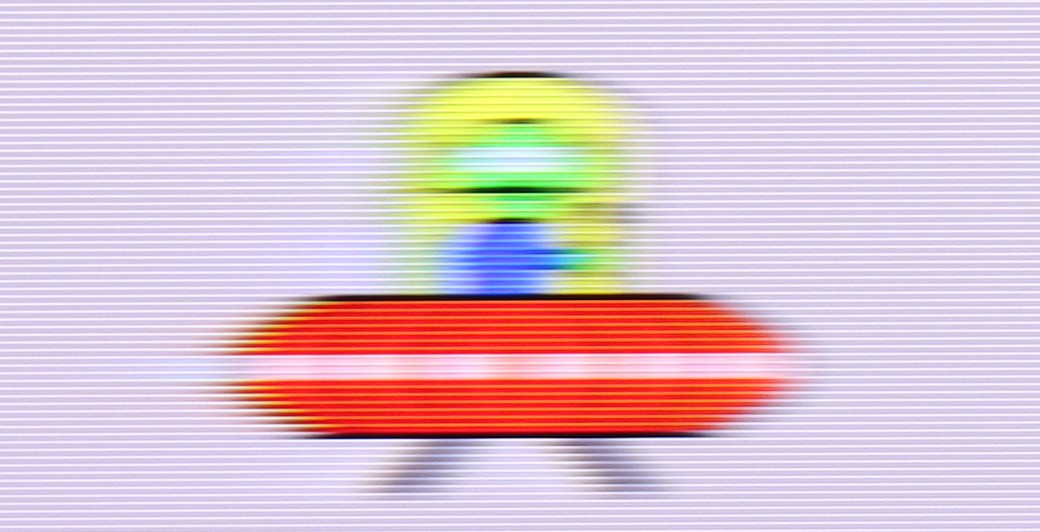
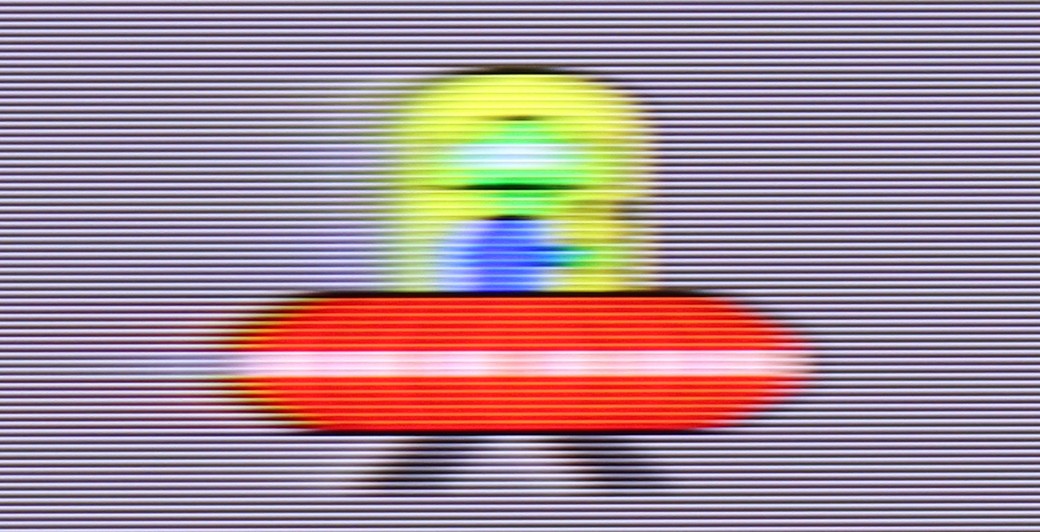
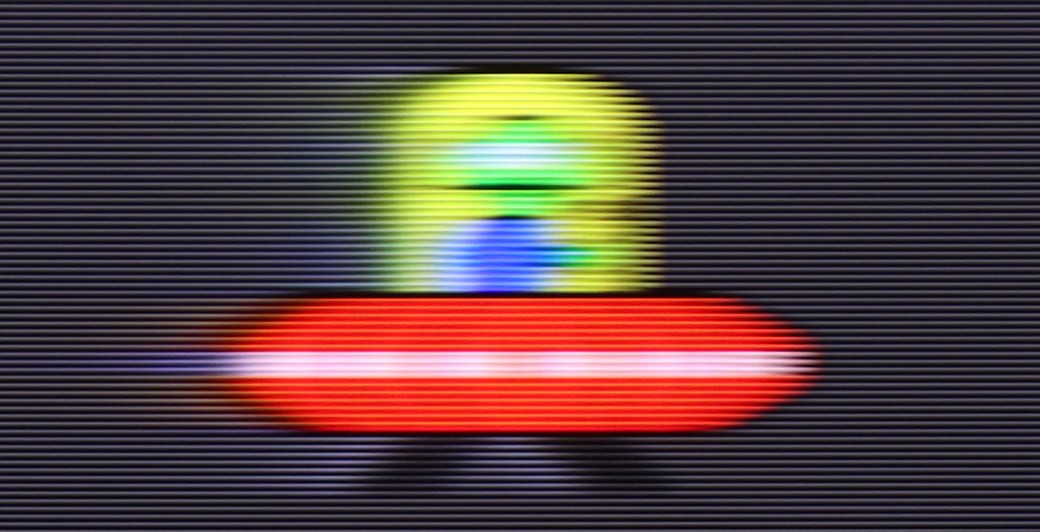
Blur (BFI function enabled):
Image flickers in this mode
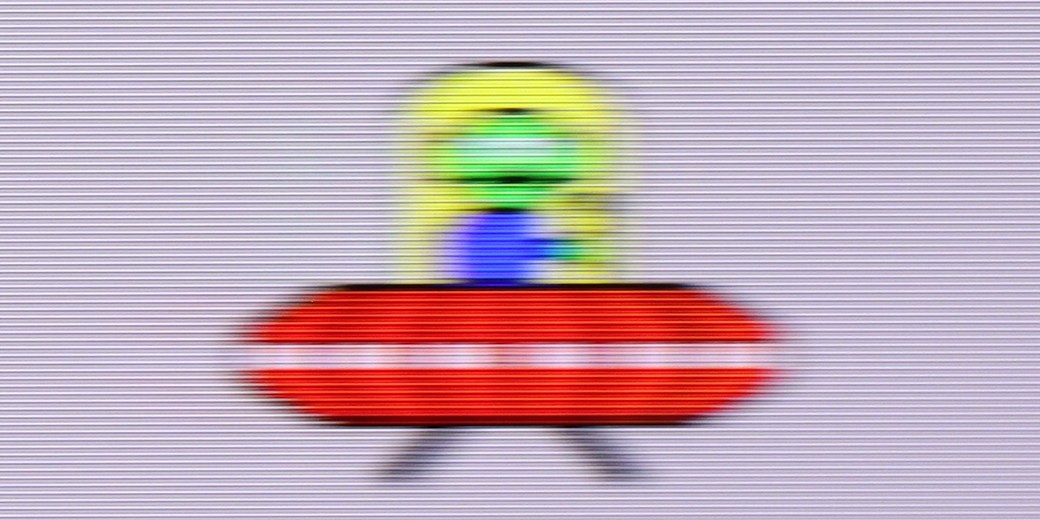
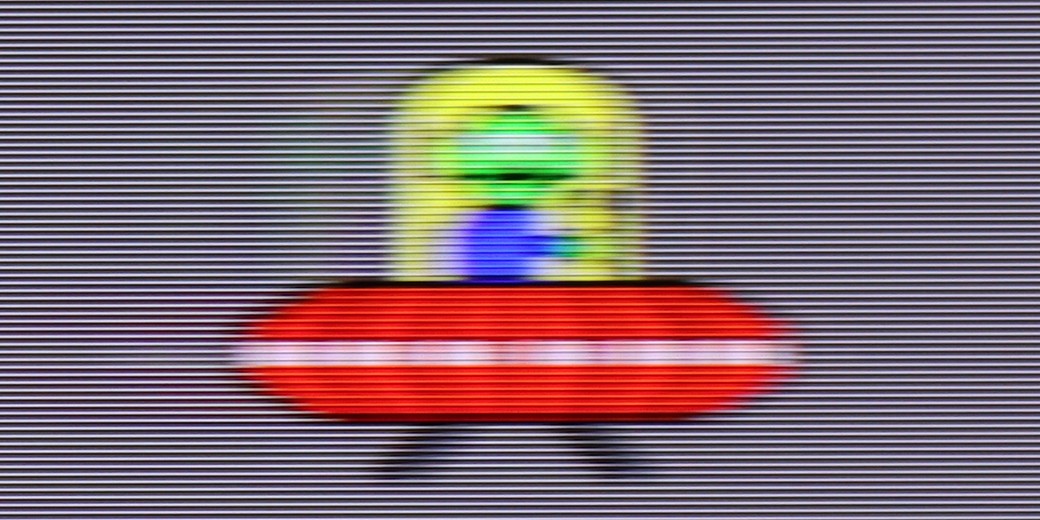
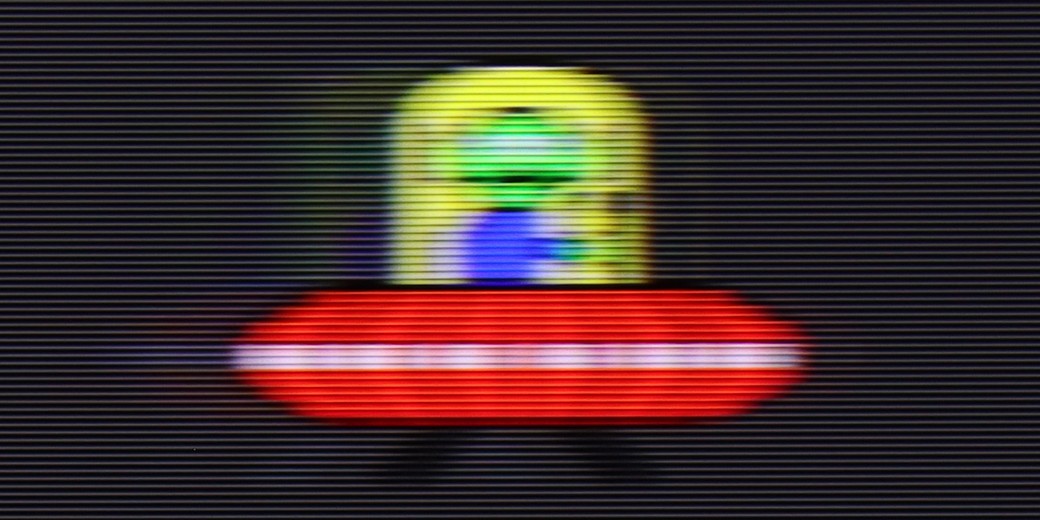
Blur (4K@144Hz):
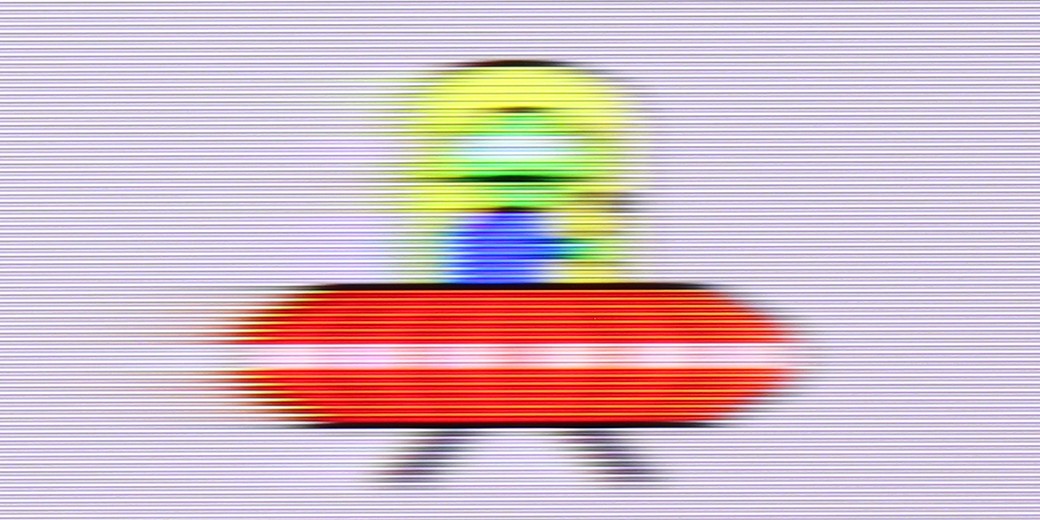
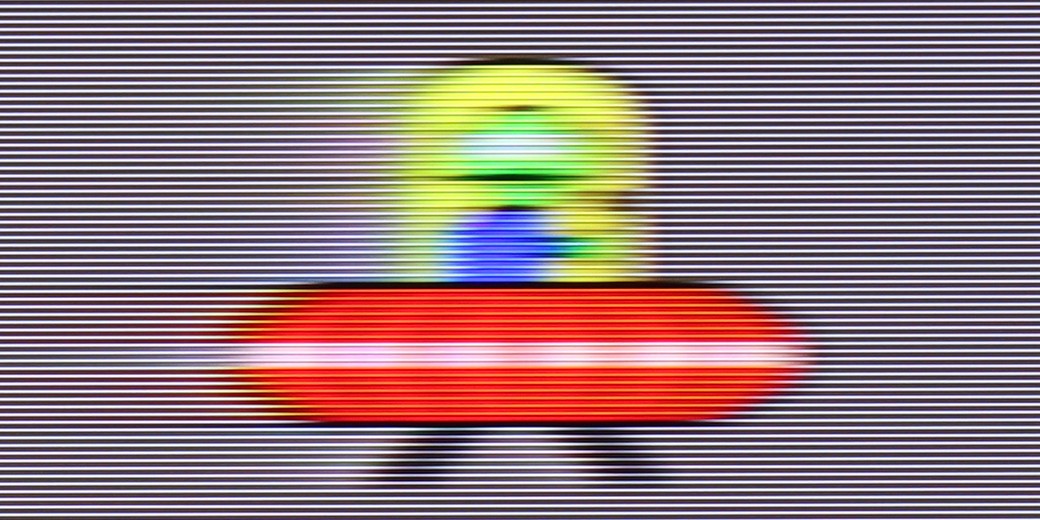
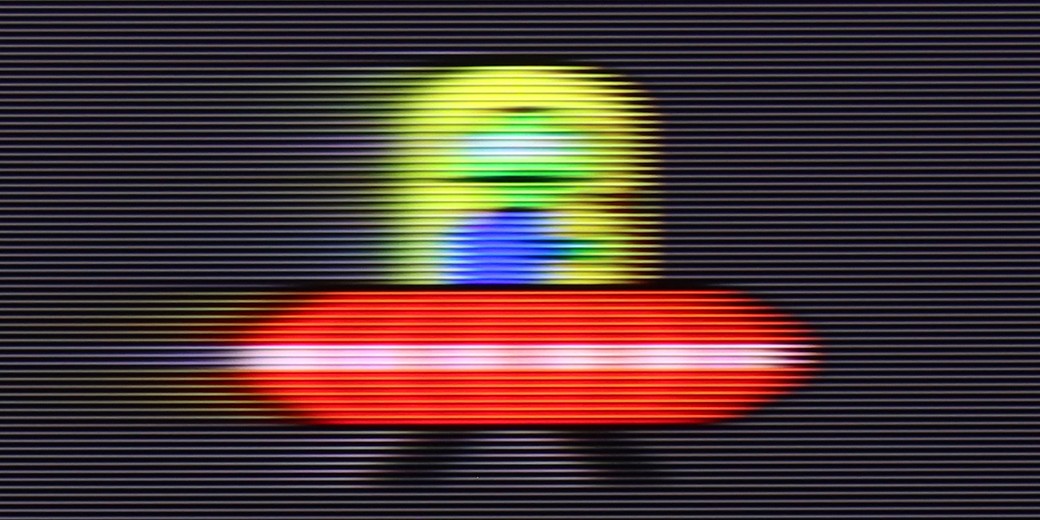
Smearing, as for a VA LCD panel, is at a low level. In fast scenes, whether it's sports or games, objects maintain sharp outlines, and the blur effect only appears against dark backgrounds. However, this does not significantly affect viewing comfort, as in most materials the image remains clear.
LG QNED93A - Console compatibility and gaming features
9.8/10
ALLM: Yes
VRR: Yes
VRR range: 48 - 144Hz
Dolby Vision Game Mode: Yes
Correct implementation of HGIG: Yes
1080p@120Hz: Yes
1440p@120Hz: Yes
4K@120Hz: Yes
Game bar: Yes
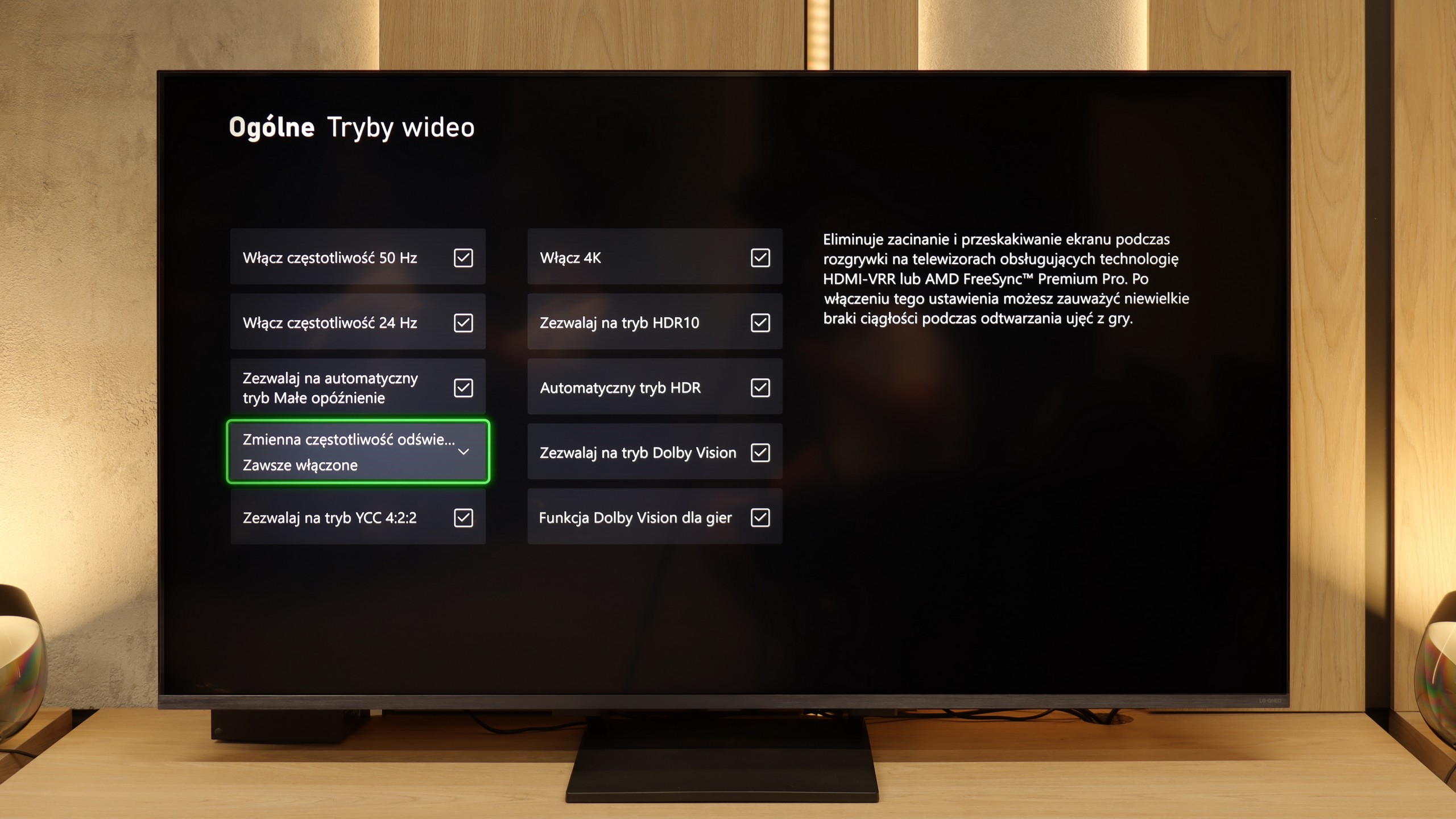
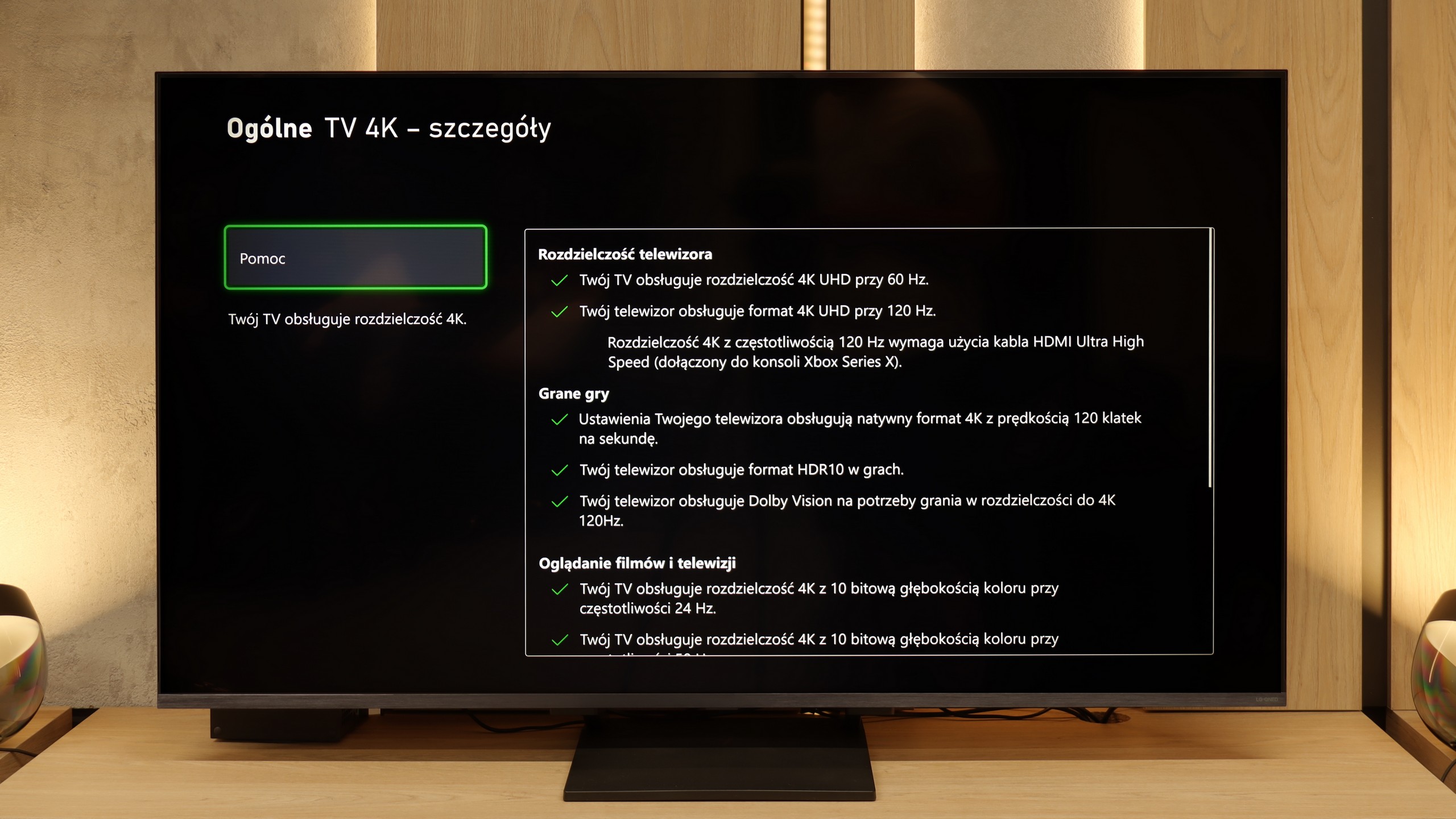
LG QNED93A is a television that has undoubtedly been designed with gamers in mind. Right from the start, we get a complete package – all four HDMI ports operate at standard 2.1, so whether we connect a console, PC, or receiver, we can be sure of full compatibility. This is important because many manufacturers still limit themselves to two ports, and here nothing prevents all equipment from having maximum capabilities. There’s also an automatic game mode (ALLM), which switches the television to the appropriate settings when the console starts up, as well as variable refresh rate (VRR). This ensures that the image does not stutter or tear, even when the frame rate drops – whether in dynamic shooters or during races.
The 144 Hz panel gives an additional advantage in computer games. While 120 Hz is sufficient for consoles, in the case of PCs, the QNED93A allows for even more – every movement, every glance to the side is refreshed faster, which makes a difference especially in e-sports. The manufacturer also considered HDR in games – the television supports the HGiG mode, which provides guidelines to ensure that the lighting effects are exactly as intended by the game developers. For dessert, we get Game Bar – a special informational strip invoked on the screen that shows parameters in real-time. You can check the frame rate, active VRR functions, or input lag levels. This solution is useful not only for settings enthusiasts, but for anyone who wants to quickly verify what mode the television is operating in and whether everything is working as it should.
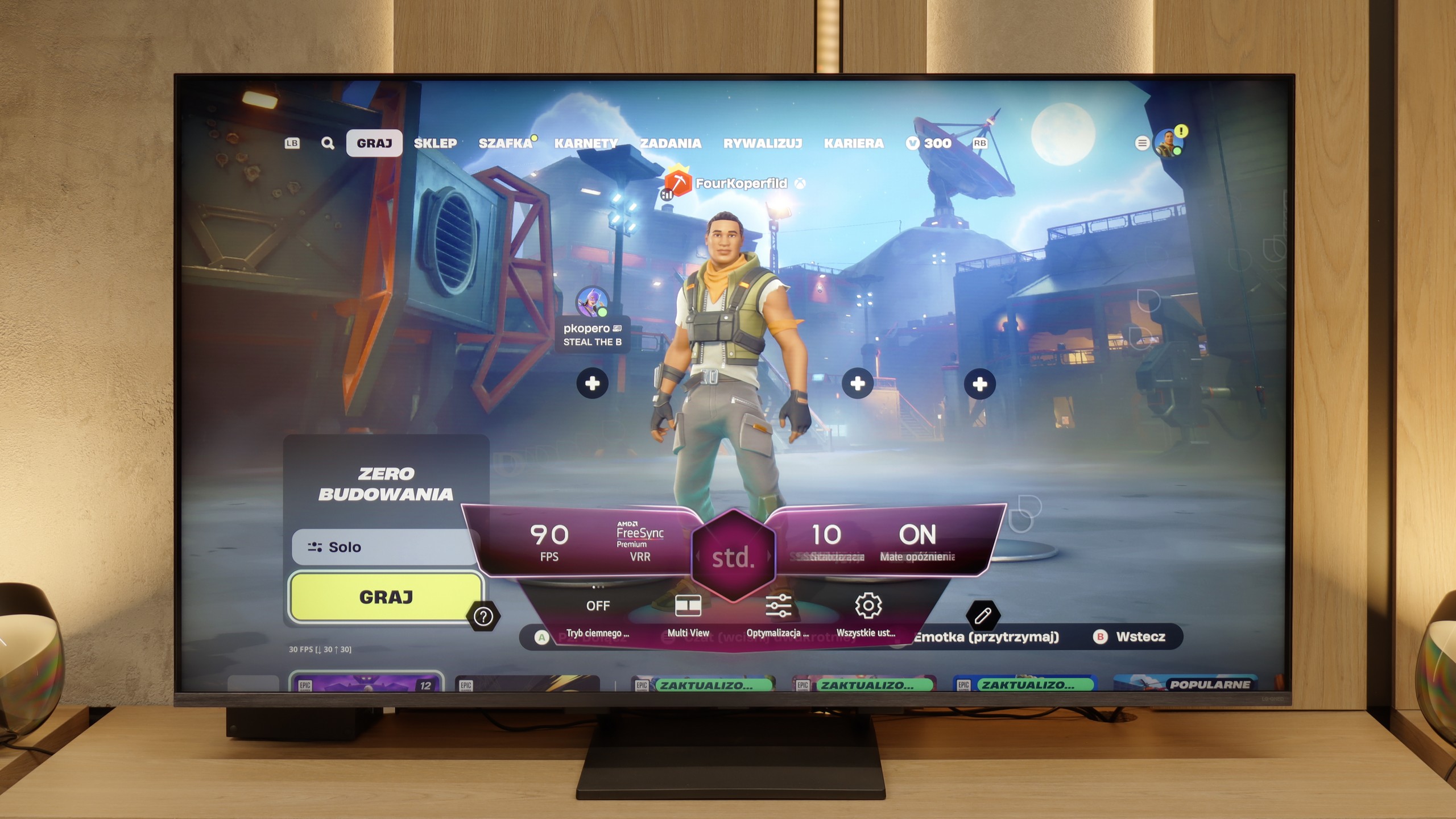
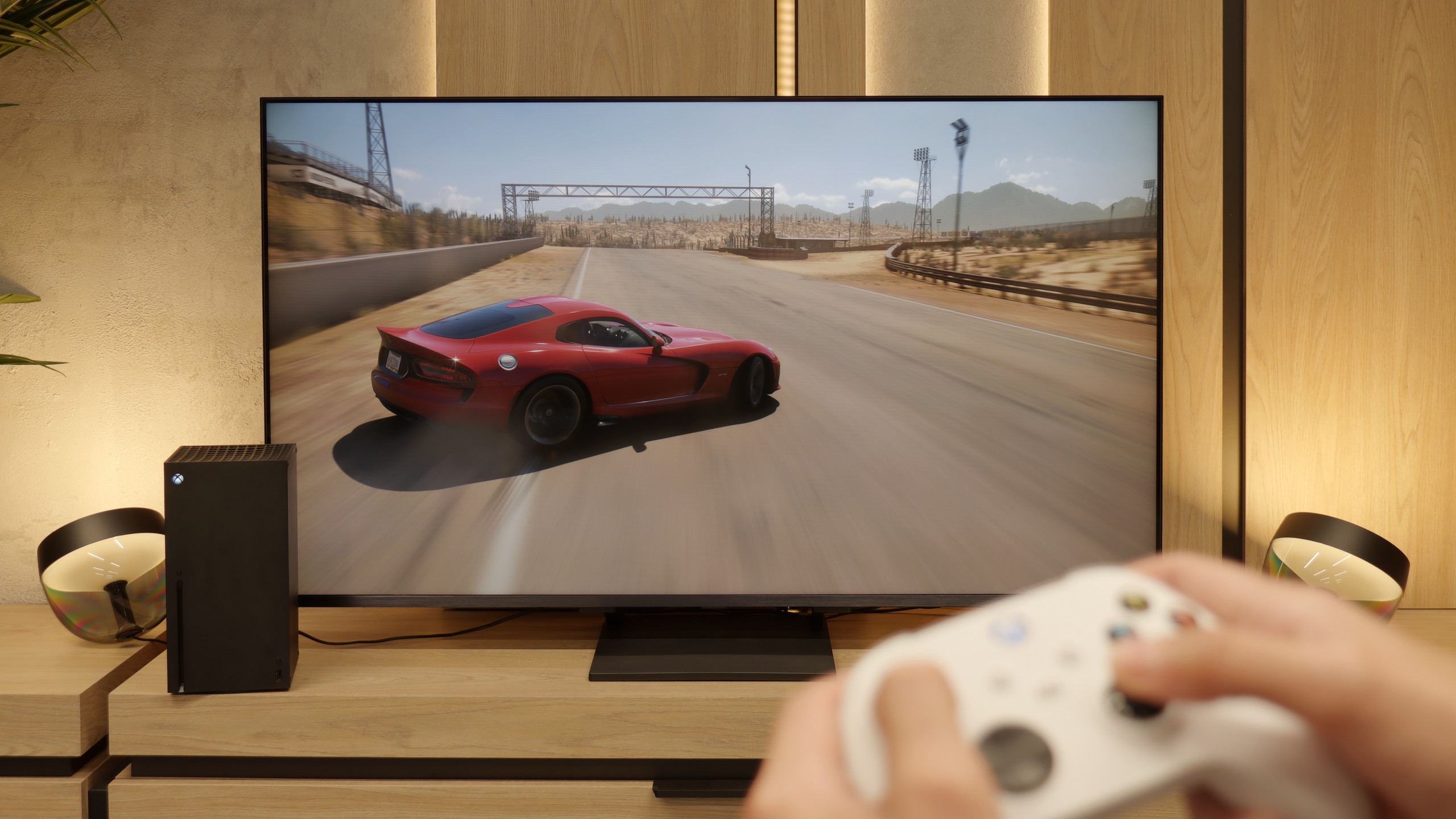

LG QNED93A - Input lag
9.8/10
In the latency field, the LG QNED93A has nothing to be ashamed of. The TV responds instantly to our actions, which is evident from the first tests with the controller in hand. In 120 Hz mode, the input lag drops to around 7 ms, meaning nearly instant response – shots, passes, and precise movements of the stick immediately translate to the screen. For 60 Hz content, the result slightly increases to just under 15 ms, but it still remains within the full comfort zone. An interesting feature is the Dolby Vision mode for games, which works with the Xbox Series X on the QNED93A. Here, the lag increases to about 20 ms. In theory, this could be considered a deterioration, but in practice, it’s still a very good result. Even with such a demanding picture standard, gameplay remains dynamic, and the differences in control are practically imperceptible.
| SDR | HDR | Dolby Vision |
|---|---|---|
| 1080p60: 16 ms | 2160p60: 15 ms | 2160p60 DV: 21 ms |
| 1080p120: 7 ms | 2160p120: 7 ms | 2160p120 DV: 7 ms |
| 2160p60: 16 ms | ||
| 2160p120: 7 ms |
LG QNED93A - Compatibility with PC
8.6/10
Chroma 444 (maximum resolution and refresh rate): Yes
Font clarity: Good
Readability of dark text and shapes: Good
Input lag in PC mode (4K, maximum refresh rate): 7ms
Matrix subpixel arrangement: BGR
Max refresh rate: 144Hz
G-Sync: Yes
A new feature in this year's model is full support for 144 Hz refresh rate, which PC gamers will appreciate. The QNED93A works with both Nvidia graphics cards, offering compatibility with G-Sync, and with AMD products, where it supports FreeSync Premium Pro. This ensures smooth gameplay without screen tearing or stuttering, and the panel itself performs very well in dynamic esports titles and demanding AAA productions.
Equally important is the clarity of the image in everyday work. The television supports chroma 4:4:4, so fonts in Windows and applications are sharp and clear. However, we noticed a small detail - with a dark background and bright letters, subtle horizontal lines may appear due to the arrangement of subpixels. This is a minor detail that does not affect the comfort of using the television on a daily basis, but perfectionists may notice it after spending more time with text. But we don't think anyone would want to work on a 55-inch screen with text sitting less than 1 meter away from it 😉.
LG QNED93A - Viewing angles
2.9/10
Brightness drop at an angle of 45 degrees: 78%
QNED93A uses a VA matrix, and that means one thing: the category of viewing angles becomes its Achilles' heel. Already at an angle of about 45 degrees, brightness drops by as much as 80%, and colors begin to noticeably fade. This is the natural price for the high contrast that VA panels offer. There is no additional coating to improve angles, as found in some more expensive models, so the QNED93A looks best when viewed directly. If you are planning a large family viewing, where some viewers will sit more to the side, you should expect that the image will not be as attractive as it is at the center of the screen.
LG QNED93A - Daytime performance
6.2/10
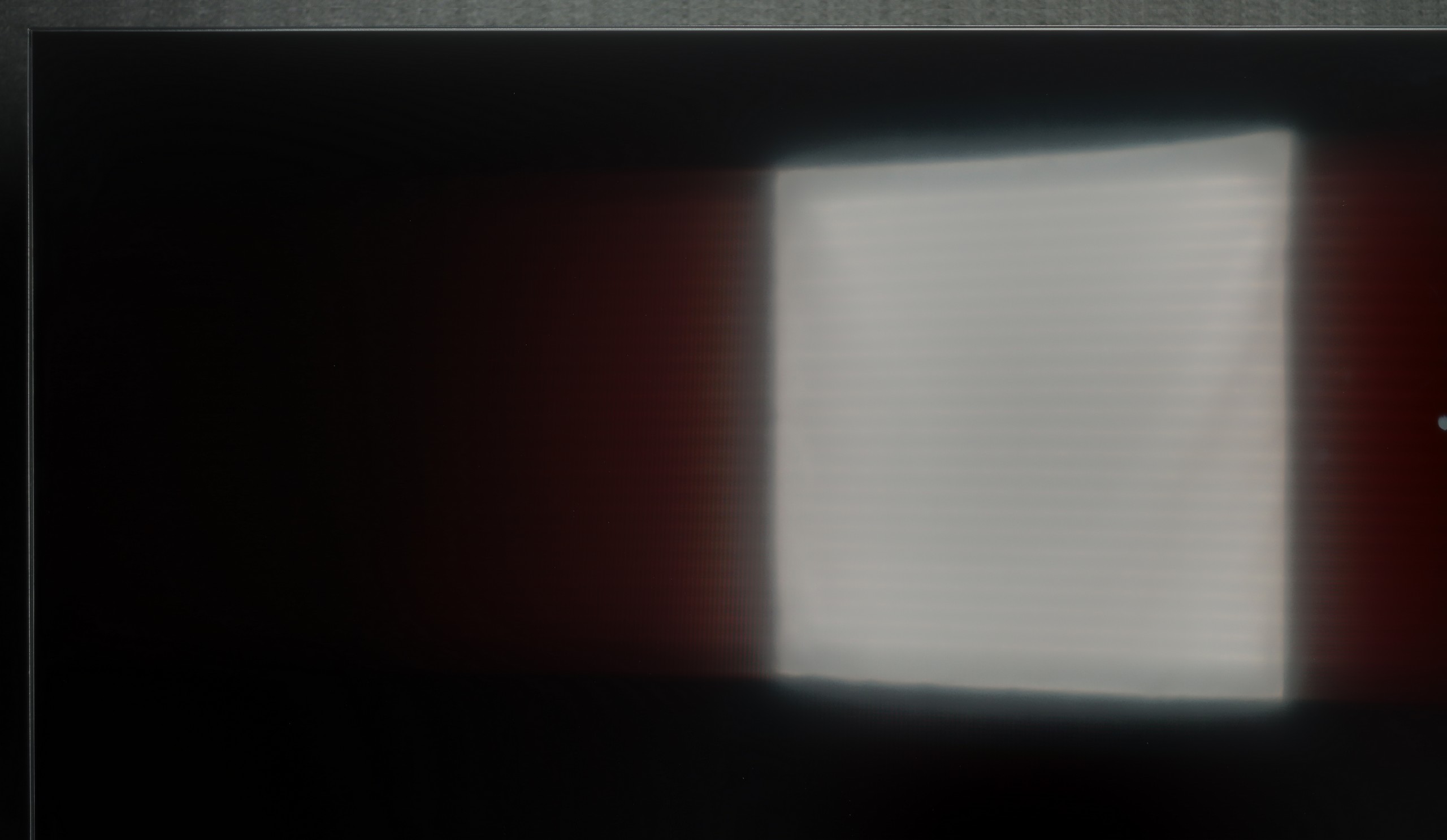
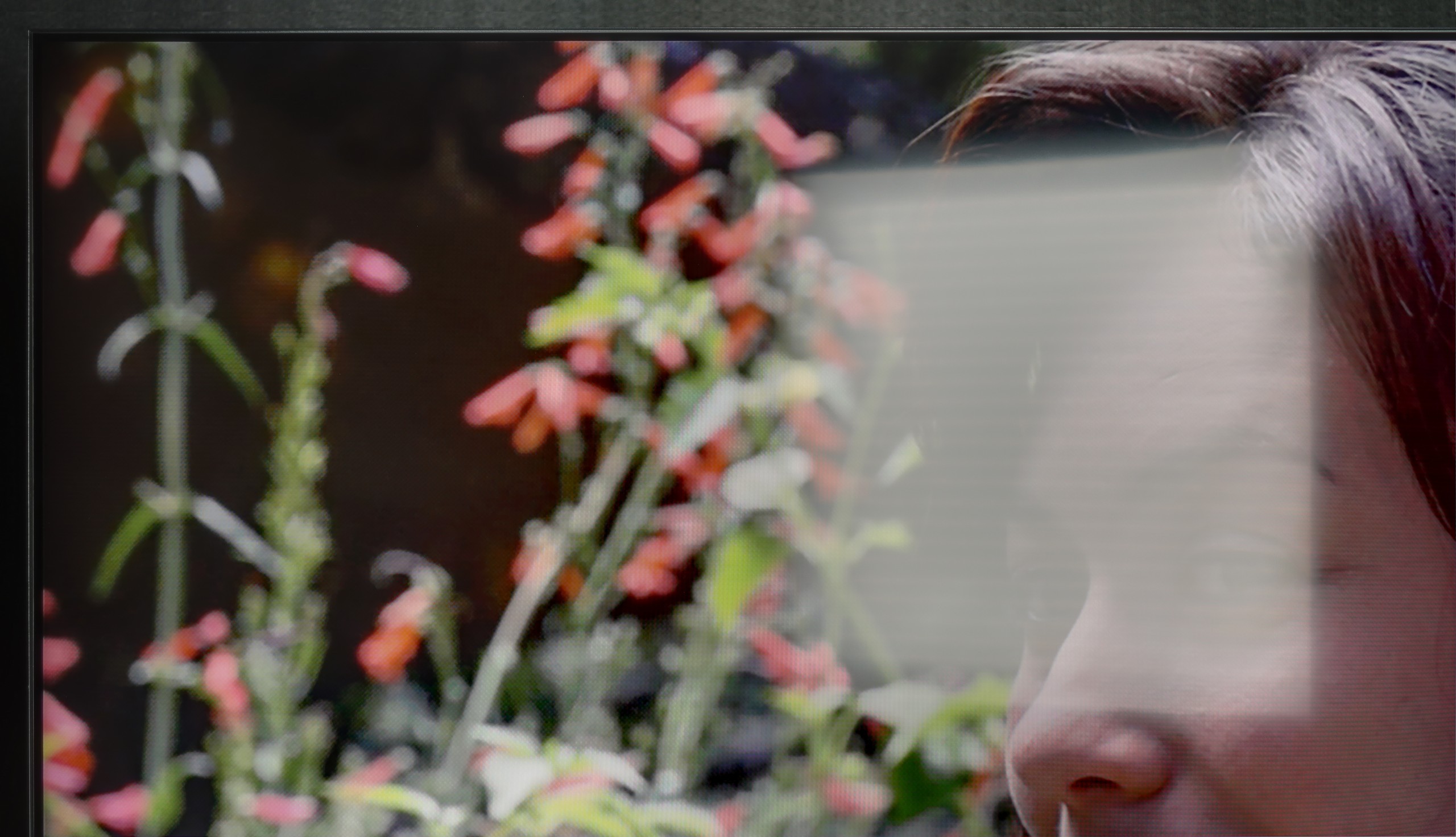
Panel finish: Satin
Reflection suppression: Decent
Black levels during daytime: Good
LG QNED93A uses a satin matrix that handles reflections moderately well. It is certainly not at the level of matte screens, but it doesn't have the mirror-like effect seen in models with a glossy surface. As a result, reflections are not too bothersome, and colors maintain their intensity even when light from the window hits the screen. Brightness is also a plus. The average level in HDR mode stays within 550-600 nits. This means that the television performs well in well-lit rooms, and you can enjoy a viewing experience even during the day when the blinds are only partially closed. In the role of a large screen in the living room, the QNED93A really performs well.
Panel brightness
Average luminance SDR
LG QNED93A / QNED90A: 546 cd/m2
LG QNED93A - TV features
8.2/10
System: WebOS
System performance: Decent
- HDMI inputs: 0 x HDMI 2.0, 4 x HDMI 2.1 48Gbps
- Outputs: Toslink (Optical audio), eARC (HDMI), ARC (HDMI)
- Network Interfaces: Wi-Fi 2.4GHz, Wi-Fi 5GHz, Ethernet (LAN) 100Mbps
- TV reception: DVB-T, DVB-T2, DVB-S, DVB-S2, DVB-C
Classic features:
Recording to USB (terrestrial TV): Yes
Recording programming: Yes
Picture in Picture (PiP): No
RF remote control (no need to aim at the screen): RF
Backlit remote control: No
Teletext: Yes
Audio only mode: Yes
Bluetooth headphones support: Yes
Simultaneous Bluetooth headphones & TV audio: Yes
Smart features:
AirPlay: Yes
Screen mirroring (Windows Miracast): Yes
Voice search: Yes
Voice search in native language: Yes
Ability to connect a keyboard and mouse: Yes








Smart Features
QNED93A operates under webOS, one of the most enjoyable Smart TV systems. It includes AirPlay, Screen Mirroring, Chromecast, and convenient voice control. The platform is reasonably clear and mostly fast, although in the tested unit, there were instances where the response to pressing the remote required a moment of "thought." However, it is hard to consider this a serious issue – webOS remains a refined system and will likely receive further updates to improve it even more.
Classic Features
In this model, LG did not include the old Magic remote with a numeric keypad, but the TV itself performs excellently as a screen for everyday viewing of antenna channels. The EPG interface is clear, the TV offers a television guide, and we have the ability to record programs from the built-in tuners directly onto a USB drive. Everything works correctly and intuitively. We only missed the PiP function, which in 2025 is offered by just two manufacturers.
Magic Remote
The Magic remote is still the biggest difference compared to the competition. In 2025, it underwent a slight facelift – it has fewer buttons and resembles the minimalist remotes from Samsung a bit. However, the cursor remained key, functioning like a magic wand. Just move your hand, and the pointer on the screen follows your movement. It’s incredibly simple yet very convenient. Navigation in the menu or entering passwords is much faster, and it’s hard to switch back to classic buttons afterwards.
Sound connection options
HDMI audio:
Other audio outputs:
Toslink: Yes
Wireless audio:
Bluetooth: Yes
Supported audio formats (external HDMI eARC audio):
Dolby Digital Plus 7.1: Yes
Dolby True HD 7.1: No
Dolby Atmos in Dolby Digital Plus (JOC): Yes
Dolby Atmos in Dolby True HD: No
DTS:X in DTS-HD MA: No
DTS-HD Master Audio: No
Senior accessibility
Numeric keyboard on TV: No
Font size adjustment: No
Audio description: Yes
LG QNED93A - Apps
9.1/10























LG QNED93A - Playing files from USB
8.8/10

| Maximum photo resolution: | Supported photo formats: |
|---|---|
The built-in media player in the LG QNED93A handles most popular video and audio formats without any issues, so it’s perfectly sufficient for basic use. However, during testing, we noticed two minor hiccups. The first is the lack of support for HEIC files, which is Apple’s photo format. The manufacturer claims that the television should open them, but in practice, we were unable to confirm that. The second issue involved text files with subtitles in TXT format. Fortunately, other, more common subtitle formats worked without any problems, so it's hard to consider this a real limitation in everyday use.
LG QNED93A - Sound
6.9/10
81dB
Maximum volume
Supported codecs
(TV speakers)
Dolby Digital Plus 7.1
Dolby True HD 7.1
Dolby Atmos in Dolby Digital Plus (JOC)
Dolby Atmos in Dolby True HD
DTS:X in DTS-HD MA
DTS-HD Master Audio
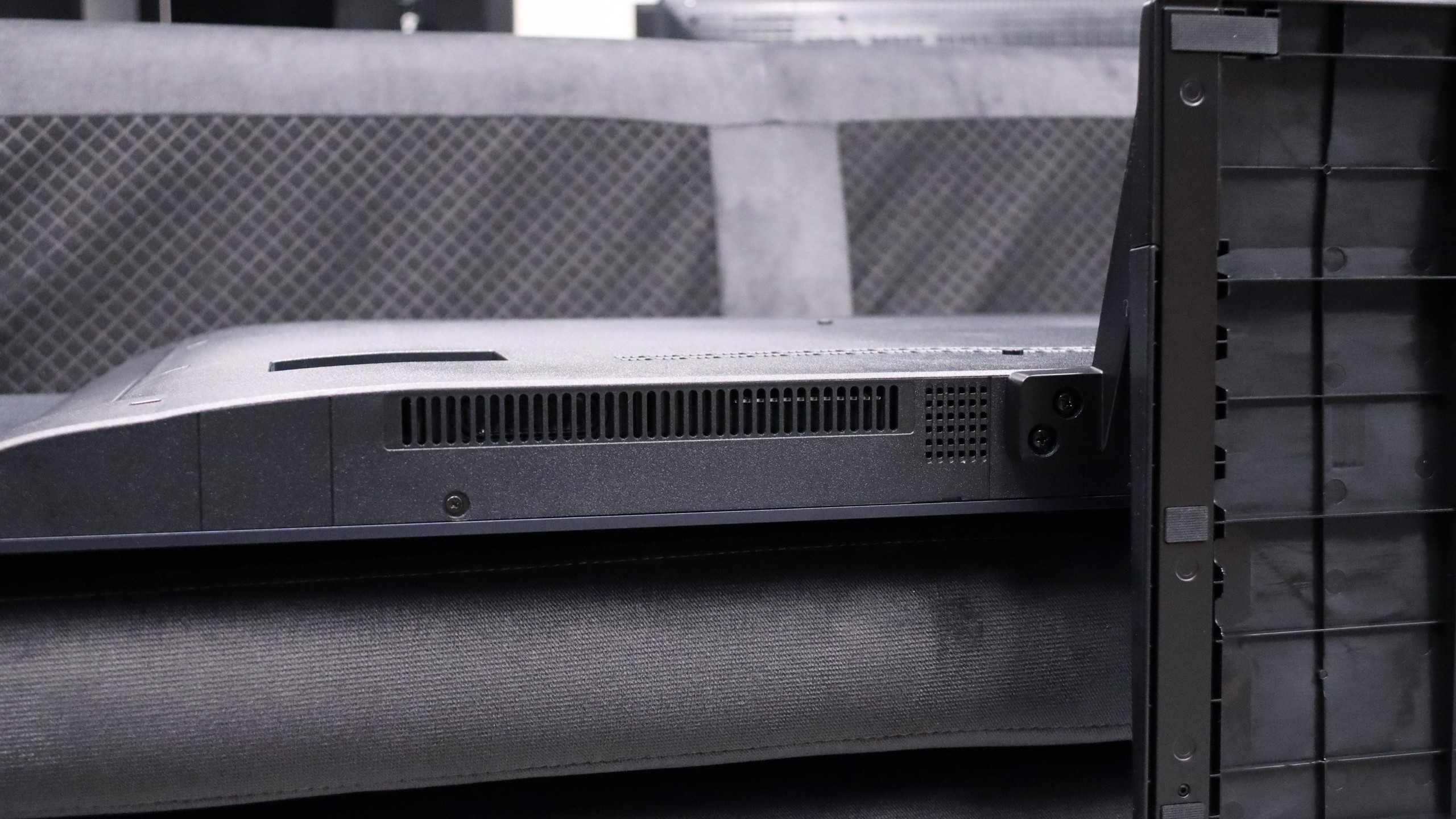
LG QNED93A sounds quite pleasant for the built-in speakers in the television. The sound is fairly clear, and at moderate volume levels, vocals and dialogues come across distinctly. The bass, as is usually the case in relatively slim constructions, is not the strongest, but its presence can be felt and is completely sufficient for everyday viewing of series. The maximum volume reaches around 81 dB and does not lead to strong distortions, although in more demanding cinematic scenes, it's noticeable that the system has its limitations. Overall, the sound can be described as acceptable and not off-putting. It definitely won't compete with a soundbar, but it also won't ruin your movie experience.
Acoustic Measurements
81dBC (Max)
75dBC
LG QNED93A - Panel details
Software version during testing: 33.20.74
Subpixel Structure:
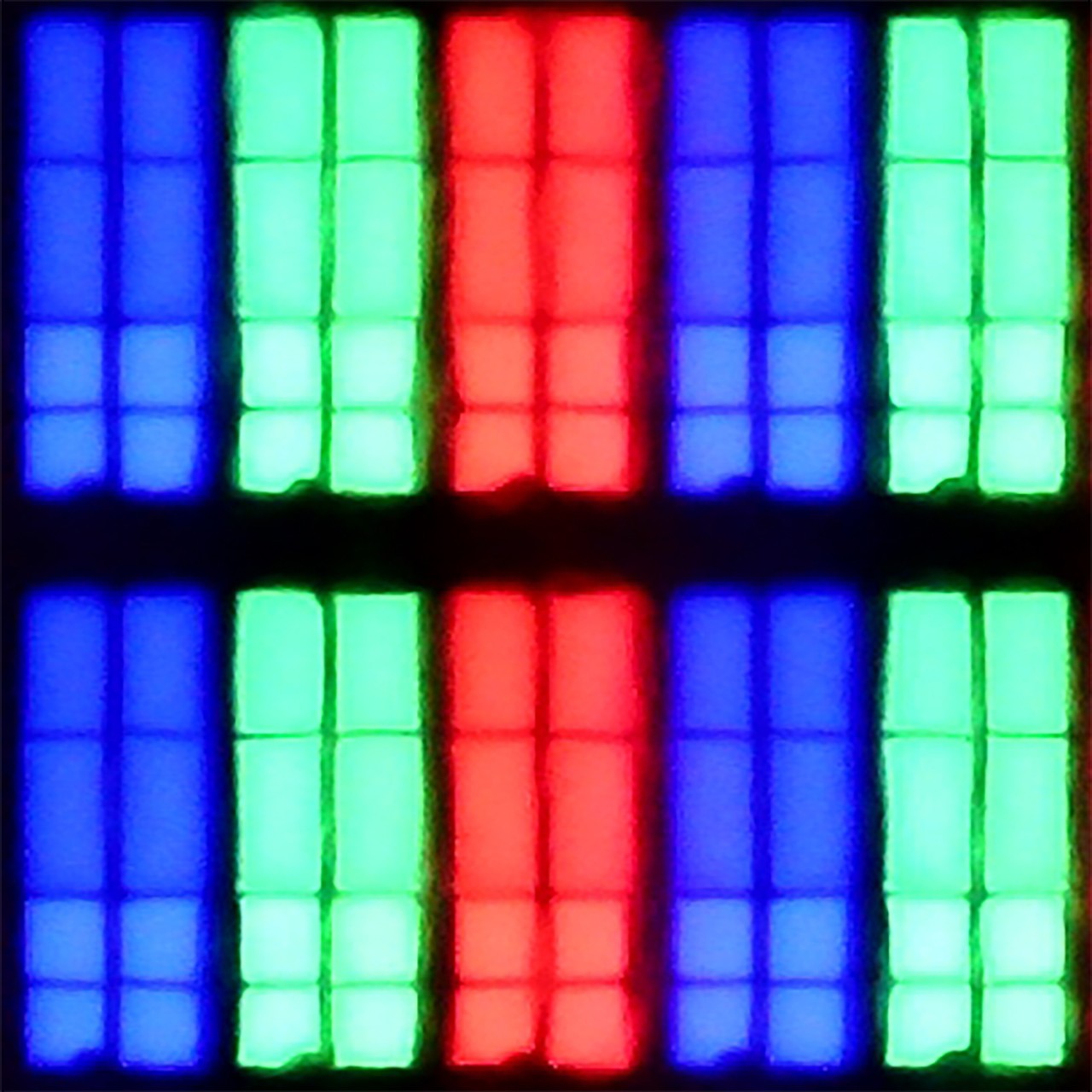
Panel uniformity and thermal imaging:
Backlight Type: Mini-LED QLED

Founder and originator of the "ChooseTV" portal

Journalist, reviewer, and columnist for the "ChooseTV" portal
See articles related to LG QNED93A / QNED90A:
1/16/2025
Shopping Reviews
The best LG TVs 2024 / 2025! Which LG TV to choose? Ranking ... 5/9/2025
1/16/2025
3/6/2025
6/20/2025

